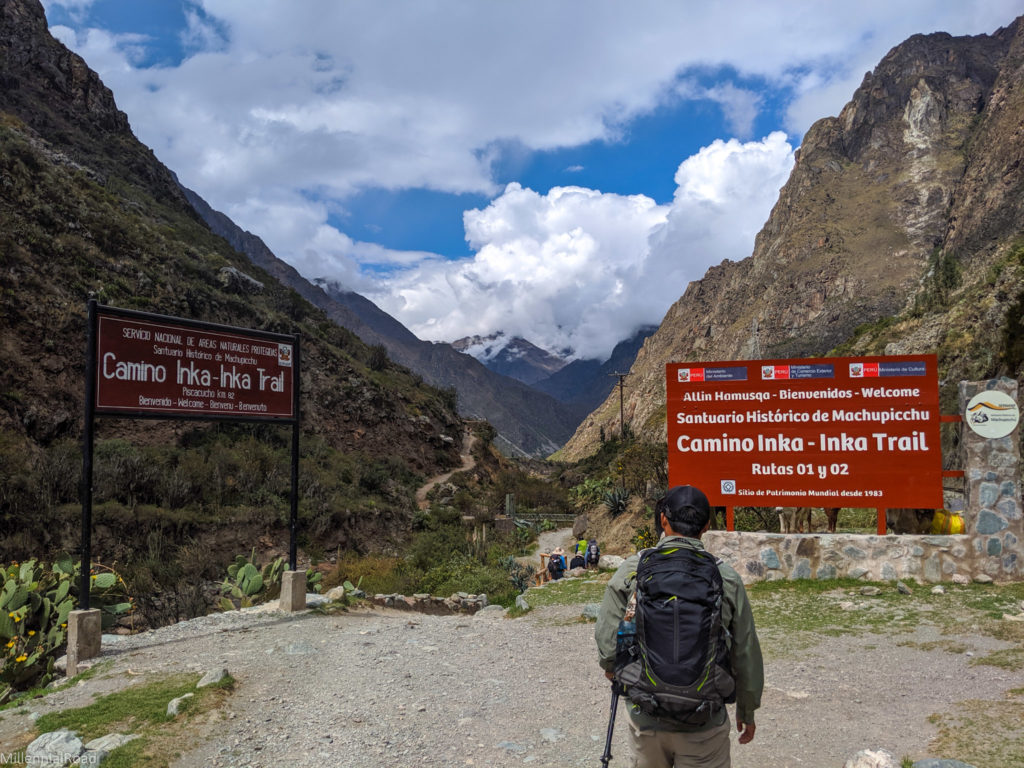
Hiking the Inca Trail to Machu Picchu may be challenging, but it is one of the most rewarding experiences of my life. Combining one of the most well-known treks in the world with one of the “new wonders of the world” is every bit as remarkable as it sounds.
While visiting the ancient citadel of Machu Picchu may be a bucket-list item for travelers around the world, most will not venture to make the four-day trek along the Inca Trail to arrive at this sanctuary city. And for many who do hope to make this trek, a lack of planning will count them out, with only 500 permits issued per day for visitors, guides, cooks, and porters combined.
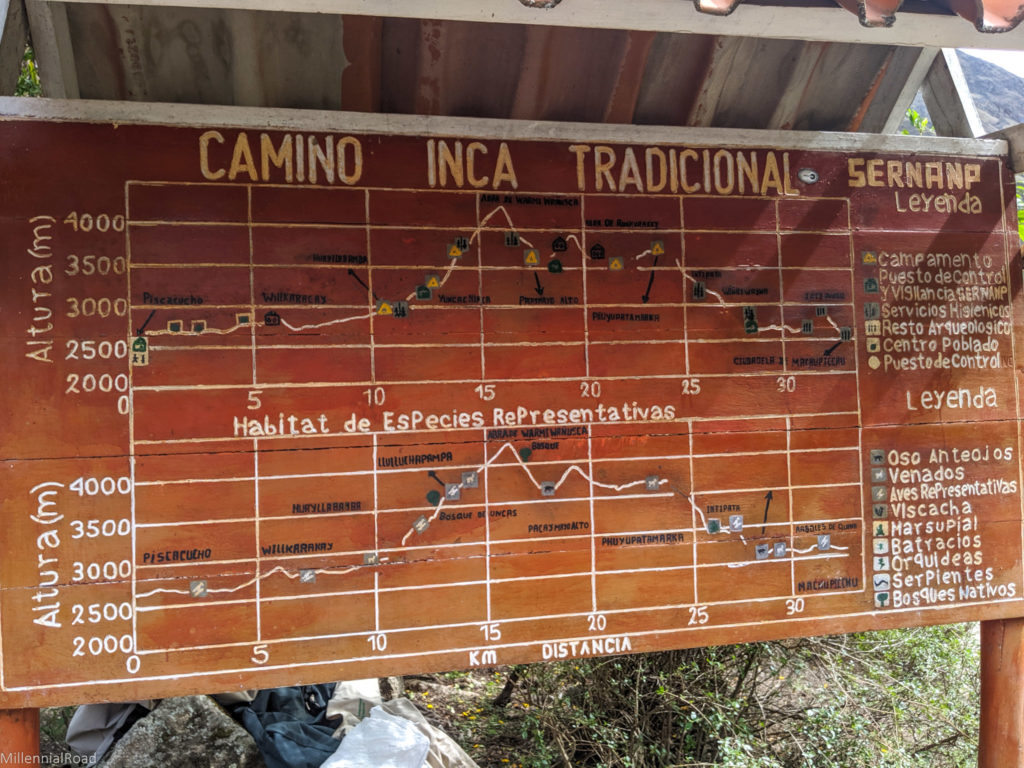
This ancient citadel sits more than 2,400 meters above sea level, with altitudes during the hike reaching much higher levels. And I can tell you first hand that anyone who is not used to that much elevation will undoubtedly notice it over the four days of trekking to reach this historical treasure.
As we hiked across the Peruvian mountainside and through lush green cloud forests, we came across several other ancient ruins before arriving at the citadel of Machu Picchu. While none compare to Machu Picchu in size and elaborateness, each of these hidden gems is awe-inspiring in its own right.
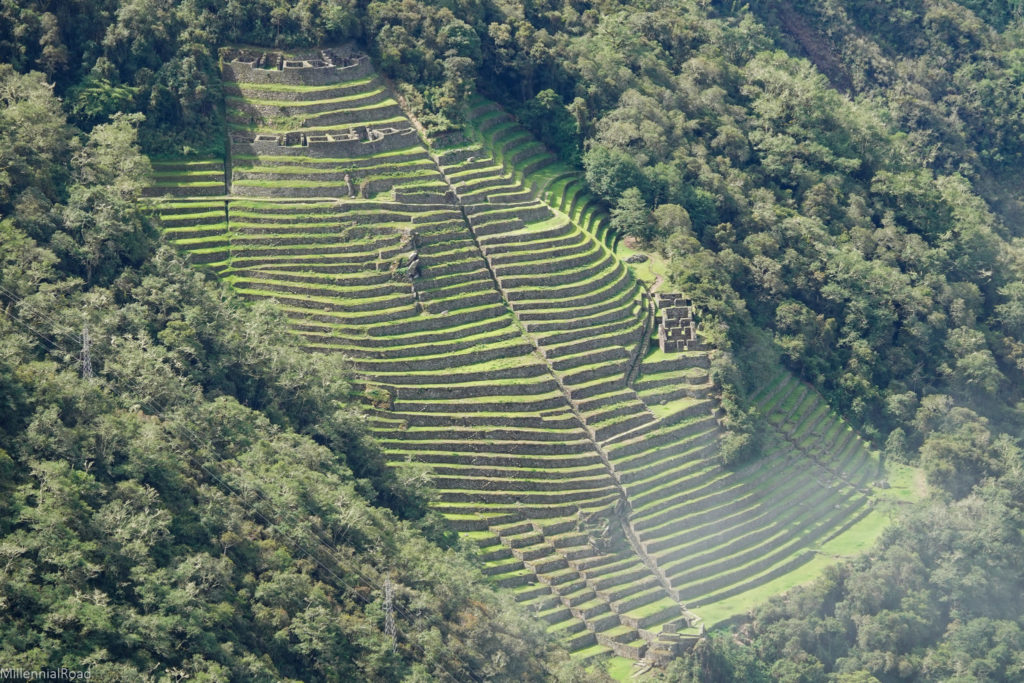
Once you’ve visited Machu Picchu, you’ll have a whole new appreciation for the fact that ancient and primitive are not necessarily the same thing.
And the trek begins
As a (relatively) young and fit person, I was feeling confident about the trek overall. That being said, I unquestionably felt some nerves about the elevation and the fact that this would be the longest and most strenuous hike I’d ever done at this point in my life.
According to our guide, most people find the second day of the hike to be the most demanding day. In my mind, that meant the first day would be no problem, and the second day would be the real test. In hindsight, that may have been an illogical conclusion.
We began the first day of our trek bright and early, taking transportation from Ollantaytambo to the starting point of the Inca Trail. The views at the trailhead were spectacular, promising an unforgettable journey from the first step.
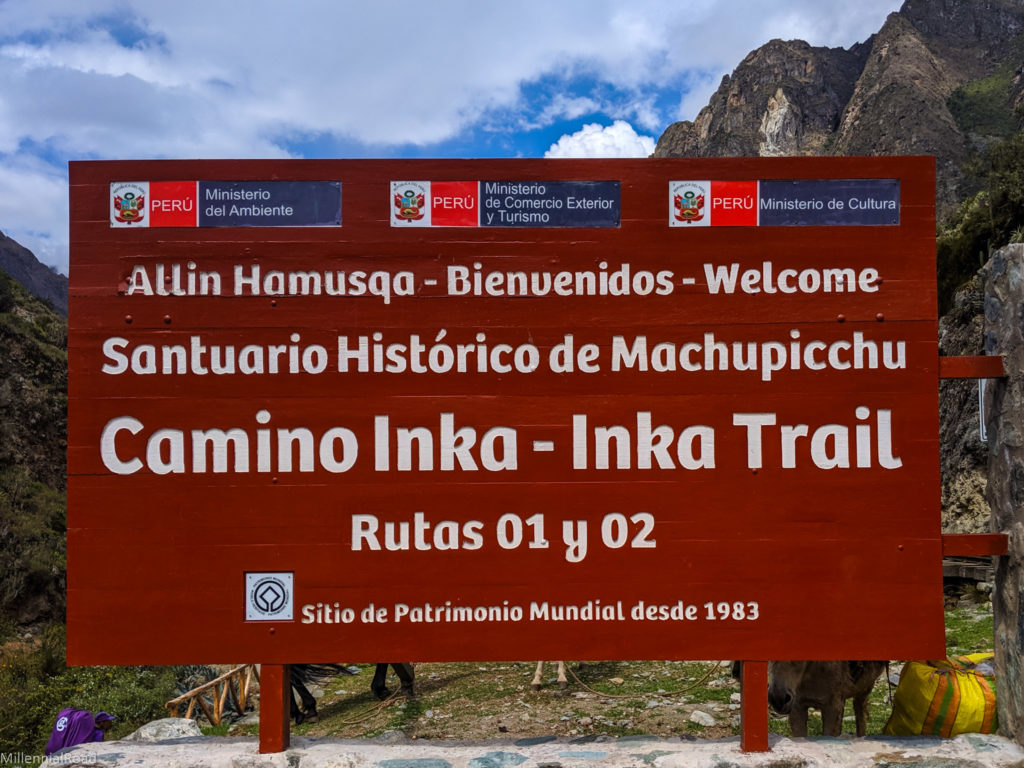
Stopping one final time at the most “normal” bathroom we would see for four days, we enthusiastically set off with our small group.
I would be lying if I said the first day of the trek was easy. In reality, it was hard for me. Yet, the more I pushed through the moments of exhaustion and pain, the more I realized I could do it and was able to appreciate the hike itself.
The day consisted of about 6-8 hours of undulating climbs and descents. The views throughout the hike were nothing short of breathtaking.
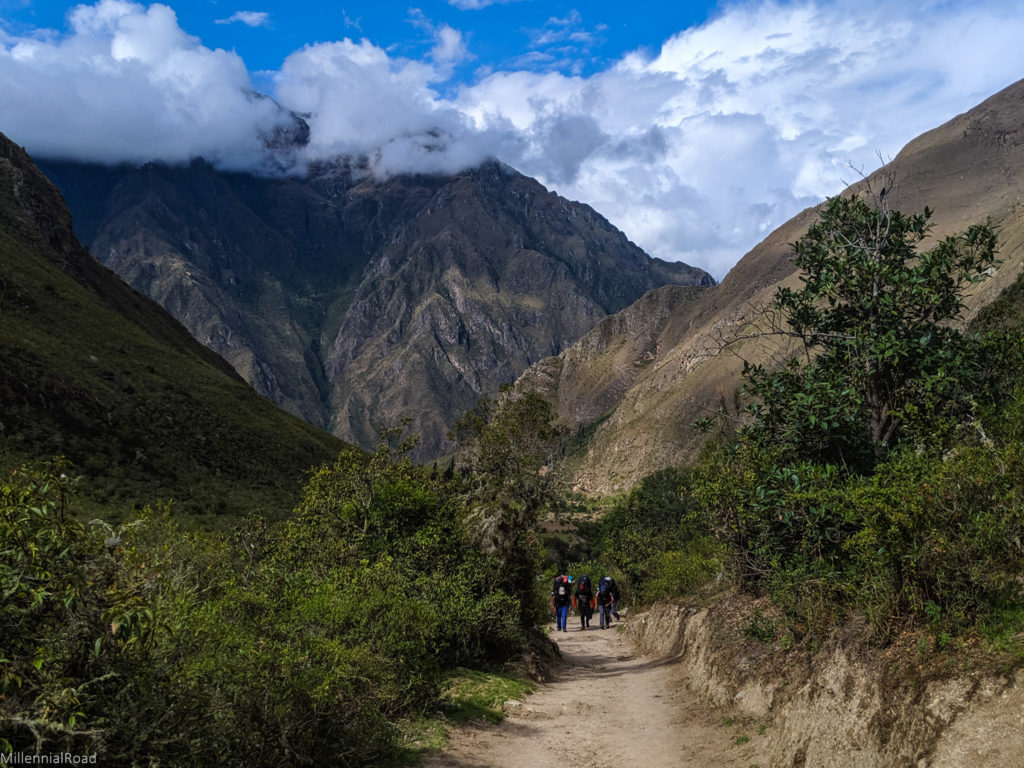
Jagged peaked mountains covered in beautiful green flora towered up around us in all directions for the majority of the hike. The scenery was mesmerizing.
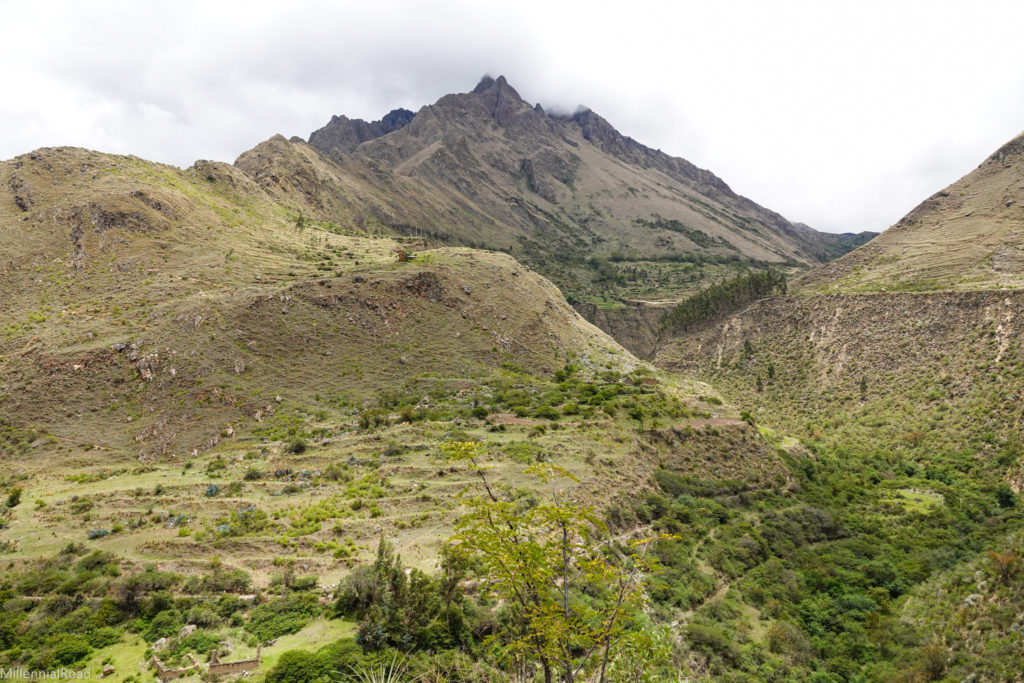
We followed alongside the powerful Urubamba River for a portion of the hike, with the gushing water making the view even more spectacular.
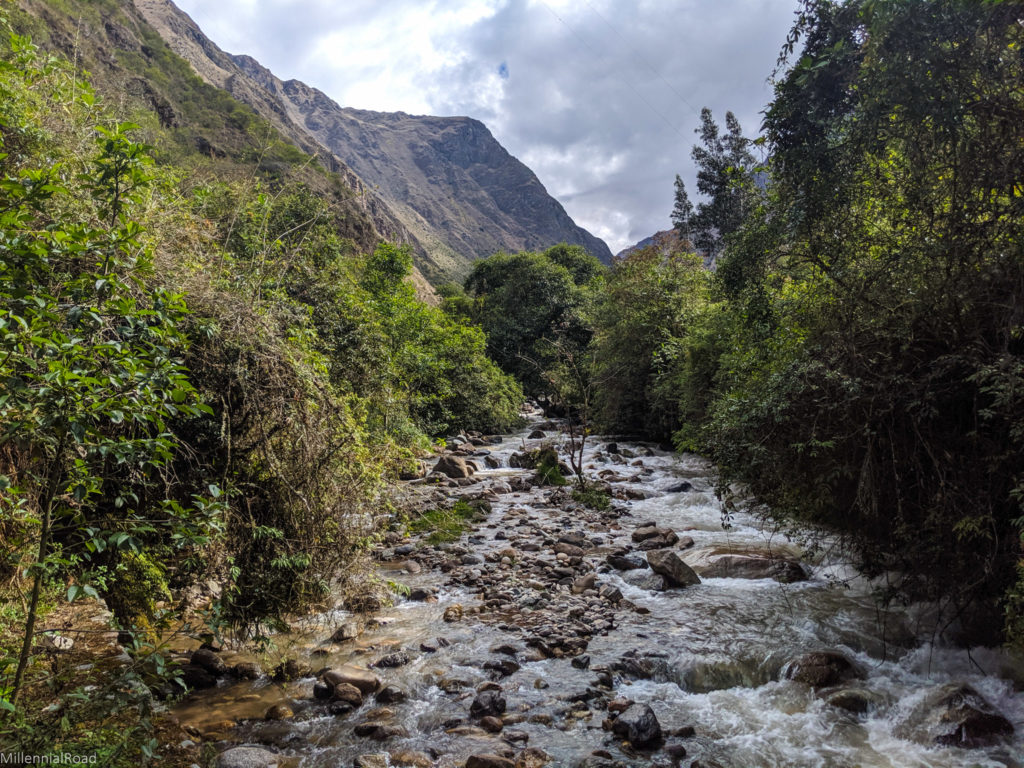
I was awe-struck as we caught our first glimpse of historical ruins, an ancient Incan settlement known as Patallaqta or Llactapata.
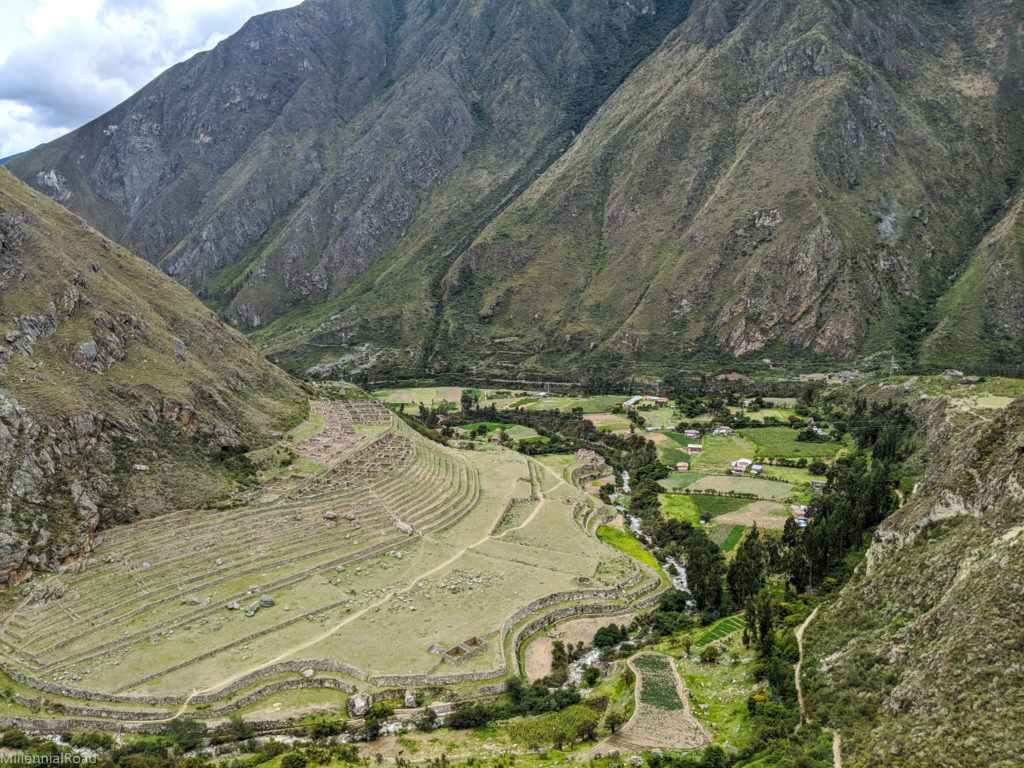
While seeing the grandiose Patallaqta from a bird’s eye view was fascinating, being able to walk through and see ancient ruins up close provides an entirely different perspective.
As we walked through ancient ruins known as Willka Raqay for the first time, I felt a stronger appreciation than ever for the skill, work and determination required to build these sites so long ago.
Despite being much smaller and simpler than the city of Machu Picchu, seeing these ruins amid these gorgeous backdrops was wondrous.
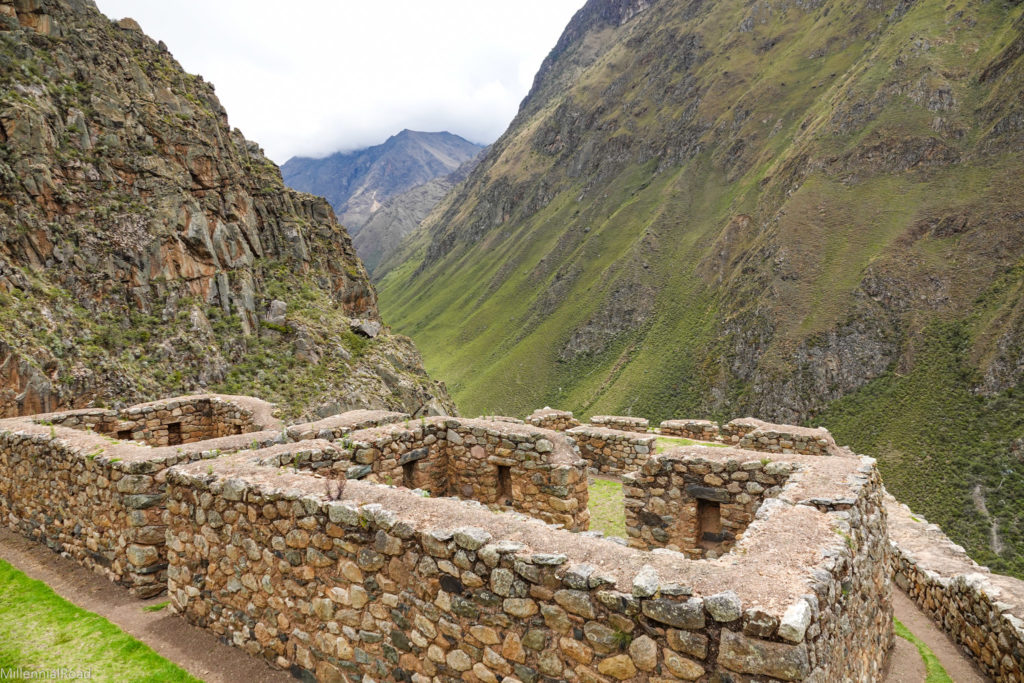
Passing by several sets of ancient ruins throughout the first day of the trek was a welcomed surprise. It was becoming increasingly more clear just how special this experience would be with each step we took.
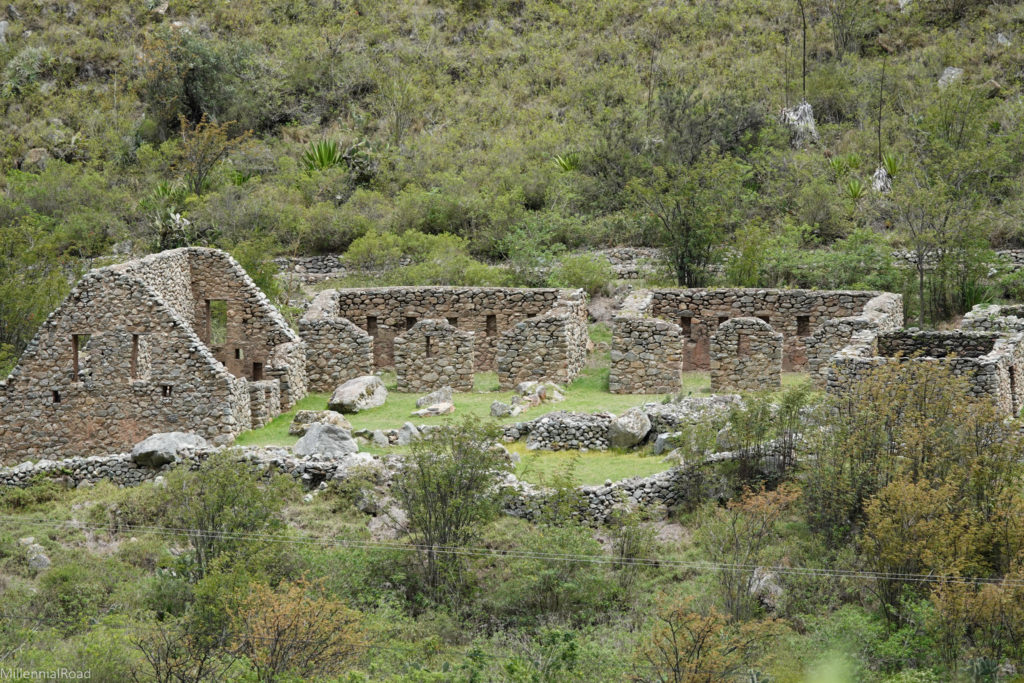
Ancient civilization was not the only sign of life to be found in this remote area of the Andes. As we hiked along the mountainside, we came across several small communities.
Although clearly poor and far removed from society, it was inspiring how similar they were to other communities. The indigenous people here have had to surmount remarkable feats to survive in this harsh terrain, but this has not stopped them from overcoming.
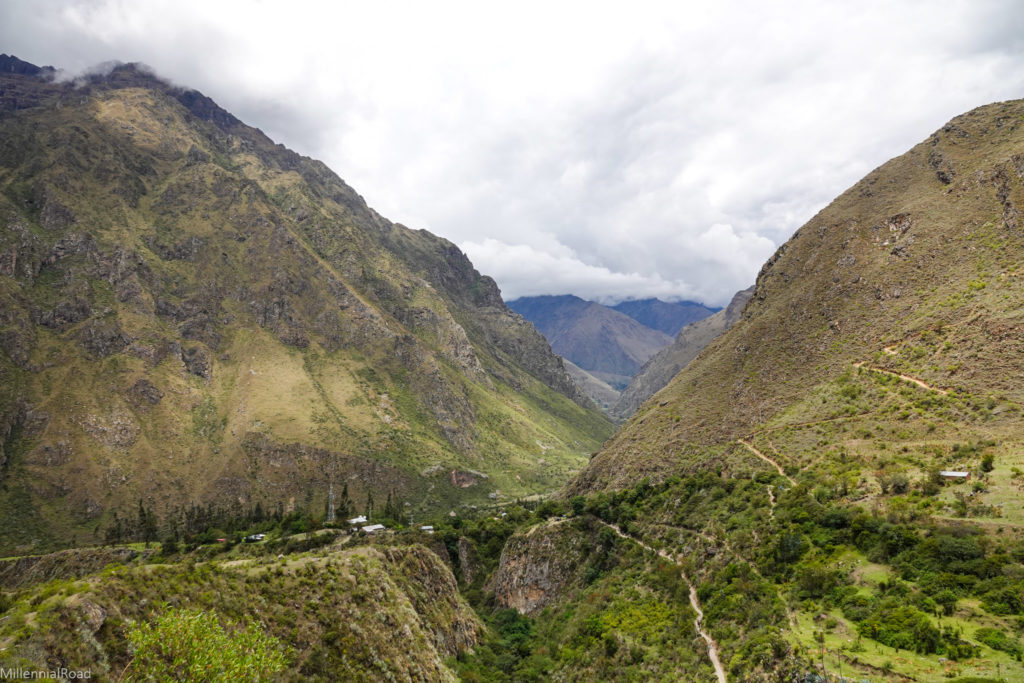
I was also surprised by the number of cats and dogs roaming around during our hike. I could almost forget that I was in a remote location in the mountains during these familiar encounters with furry friends.
My amazement didn’t stop there. I could hardly believe my eyes (and stomach) when we were served a flavorful and balanced trout dish for lunch. Our tour group continuously went above and beyond, providing us with snacks and refreshments multiple times throughout the day. I will never be able to say enough about the quality of food and service throughout the trip.
After a long day of hiking, we were surprised to be greeted with a bucket of beers for sale when we made it to our campsite. Well, don’t mind if I do. We all kicked back, relaxed and enjoyed the victory of making it through the first day of the trek.
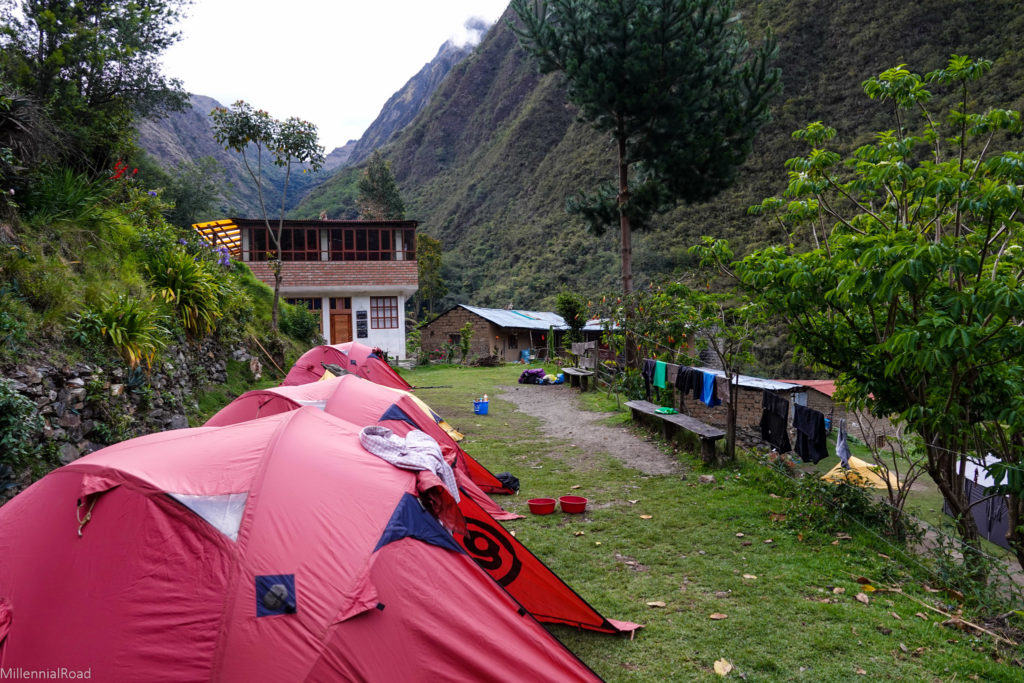
As I curled up in my sleeping bag in our tent after an exhausting day, I knew the next day would be challenging but couldn’t help but feel accomplished and excited for what would come next.
Day 2 of the 4-day trek
Infamously known as the most challenging day of the 4-day trek, the second day was tough, but it wasn’t as bad as I had anticipated. I can’t say for sure whether that speaks to my overall fitness or my unwarranted anxiety levels.
We woke up at 5:30 in the morning and started with a delicious breakfast before heading out. As with each day of the trek, our amazing porters stayed behind to pick up the campsite and then hiked past us further along the trail, carrying all of the essential (and heavy) items on their backs.
We began trekking uphill almost immediately, and this continued for the vast majority of the day.
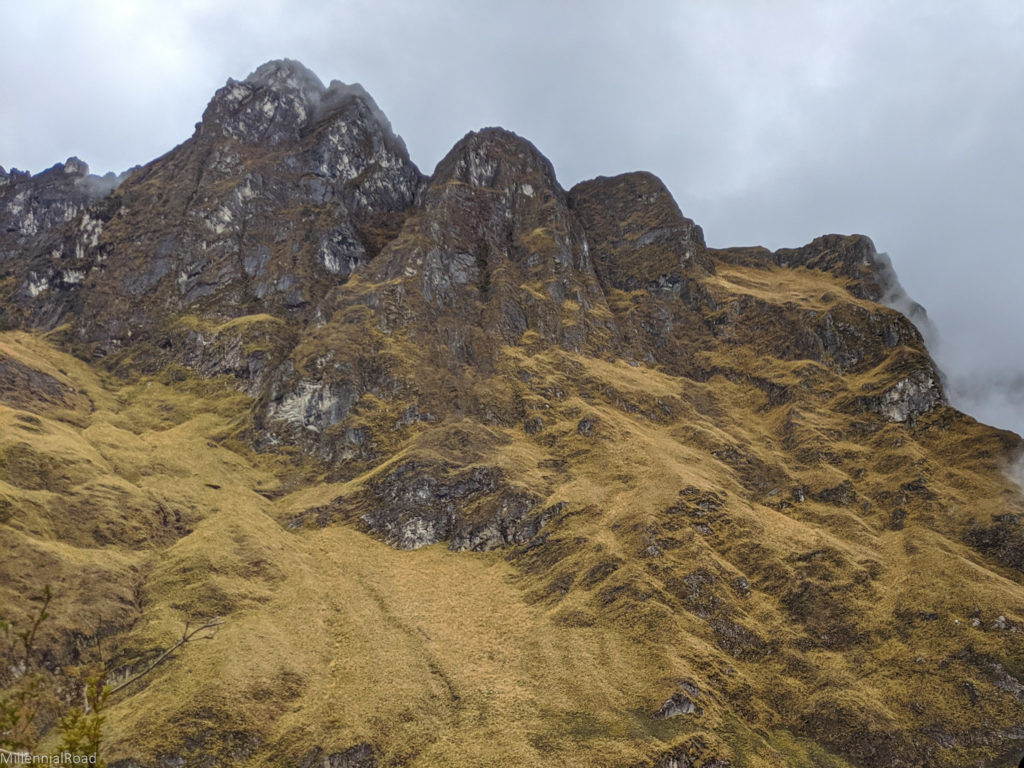
The first part of the hike was similar to the first day of hiking, with panoramic views of jagged mountain peaks covered in green surrounding us in most directions.
The scenery continued to take my breath away throughout the journey. And no, it wasn’t just the elevation!
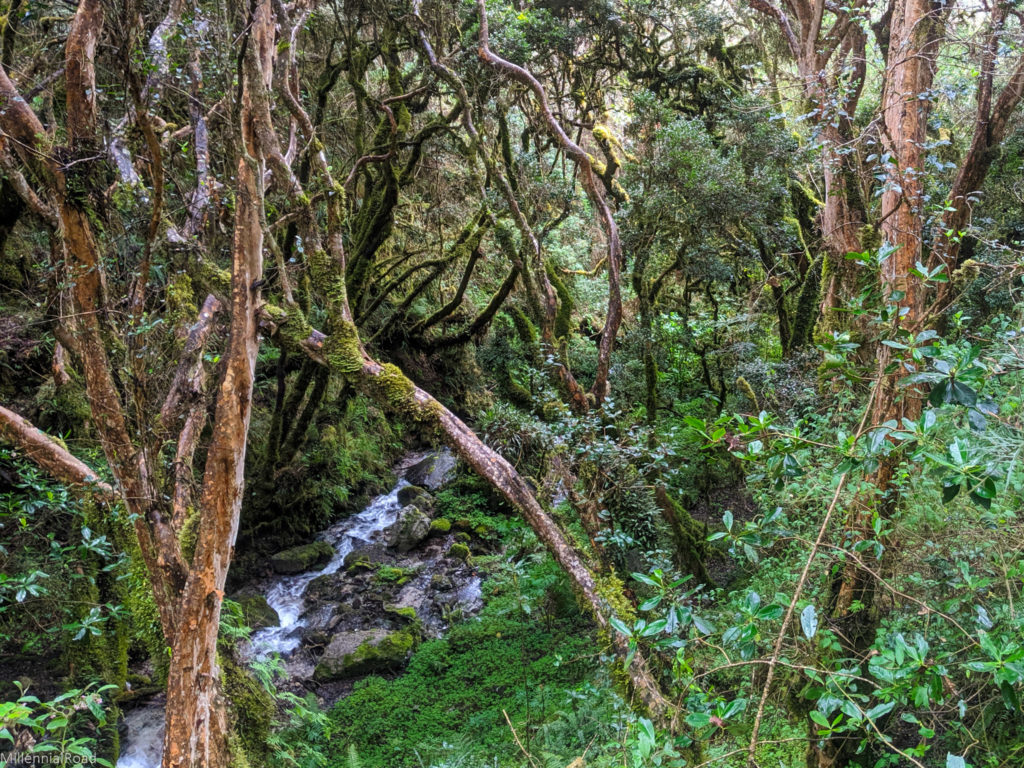
After a few hours of hiking, the landscape began to look more like a forest or a jungle. The lush green trees provided a welcomed escape from the sun.
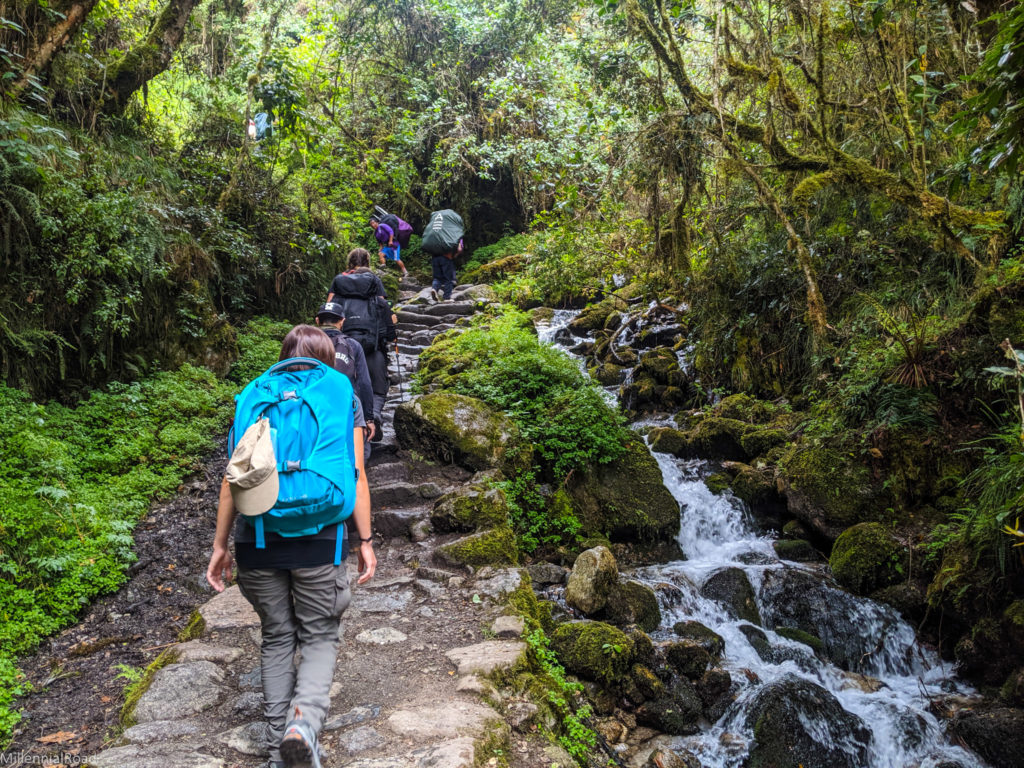
As we hiked alongside a creek, we came across countless waterfalls hiding behind the trees. I found myself constantly blown away by the epic views that filled the journey.
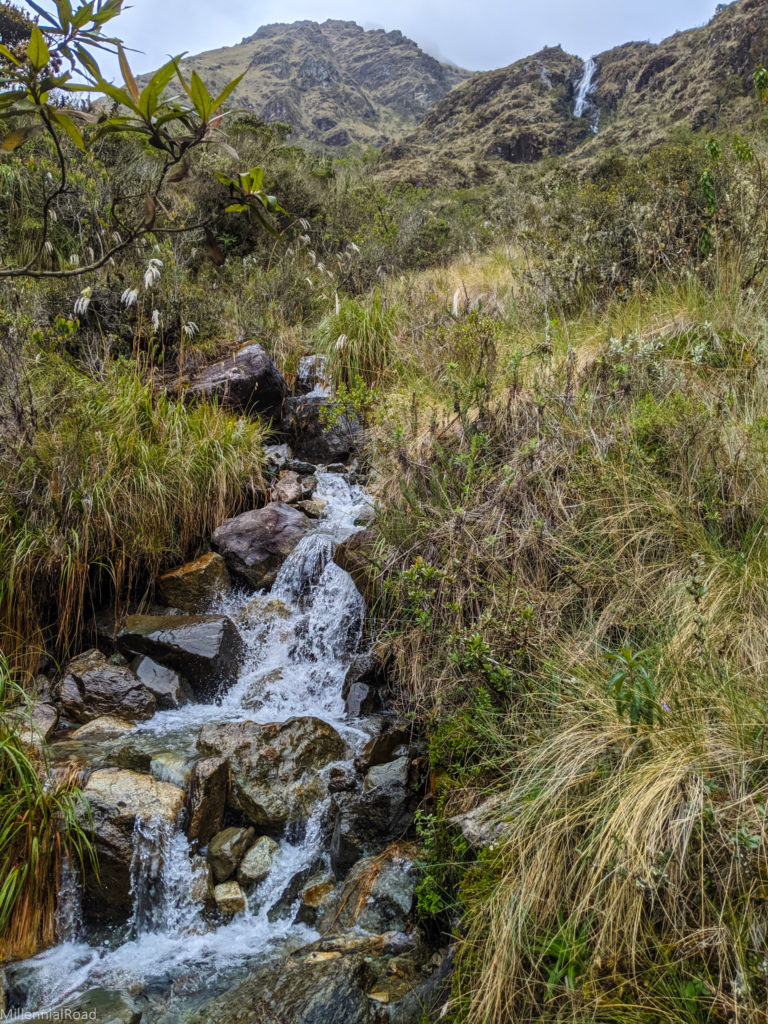
Periodically, an opening would appear through the thicket of forest, giving us a peek of the grand mountainscapes rising out of the cloud cover.
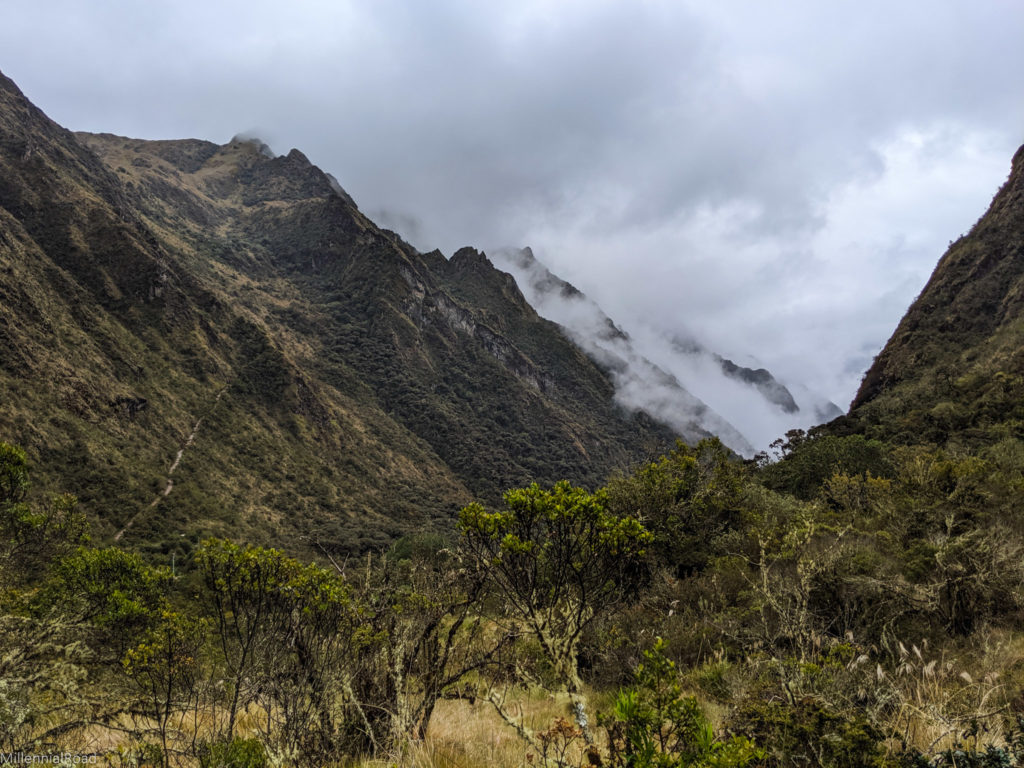
We crossed a couple of rest stops with indigenous locals selling snacks and drinks during the first half of the hike, but these ceased to exist at a certain point.
This would be the last semblance of society that we would see until we reached Machu Picchu in a couple of days.
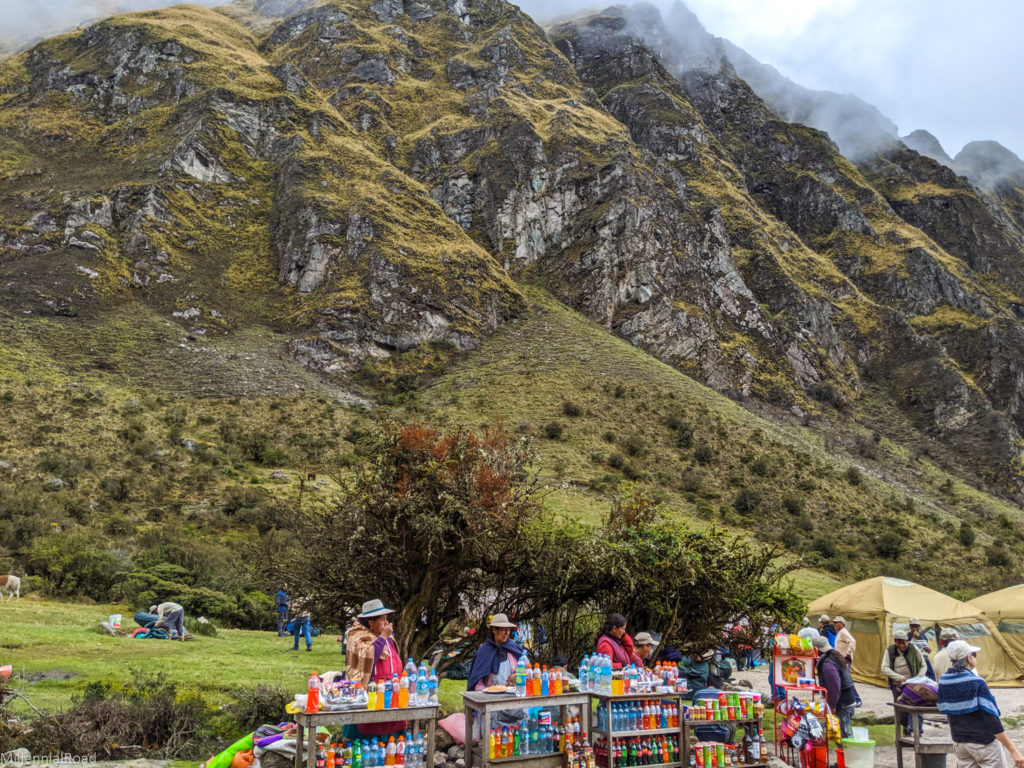
I, of course, took advantage of the last stop and bought some coca leaves, which worked wonders for helping with the altitude and providing extra energy. You may be thinking—coca leaves are bad! Well, let me put that myth to bed.
It is customary for indigenous people in Peru to enjoy unrefined versions of this plant, which has both medicinal and spiritual significance. It is typically consumed by chewing a wad of leaves or drinking it as tea.
The coca leaf is believed to help with headaches, fatigue, thirst, and other symptoms of altitude sickness. The feeling from consuming it does not differ much from drinking coffee.
Well, good thing I had stocked up on this magical plant because the next thing I know, I’m being told the most challenging part of the entire hike would be the last section of the day, just before the summit. Come to find out, this stretch of the trek is called Dead Woman’s Pass. So that was reassuring…

I felt a bit of nerves as we approached Dead Woman’s Pass, but once the peak finally came into sight, the adrenaline began coursing through my veins and carried me through.
Due to the fact that the pass was so challenging, a large number of individuals from different groups congregated at the peak, applauding those who had made it and encouraging those who needed one final push to reach the top.
The sense of community at this junction almost felt tangible. Very little connects people more than overcoming united suffering.
After we reached the summit, we had about an hour and a half of hiking downhill remaining. It was uneven rocky steps for most of the way, but nothing too steep.
Trekking downhill was more physically demanding on your body, with each step requiring dexterity and mental acuity, but it was not quite so exhausting as the uphill battle we had fought for most of the day.
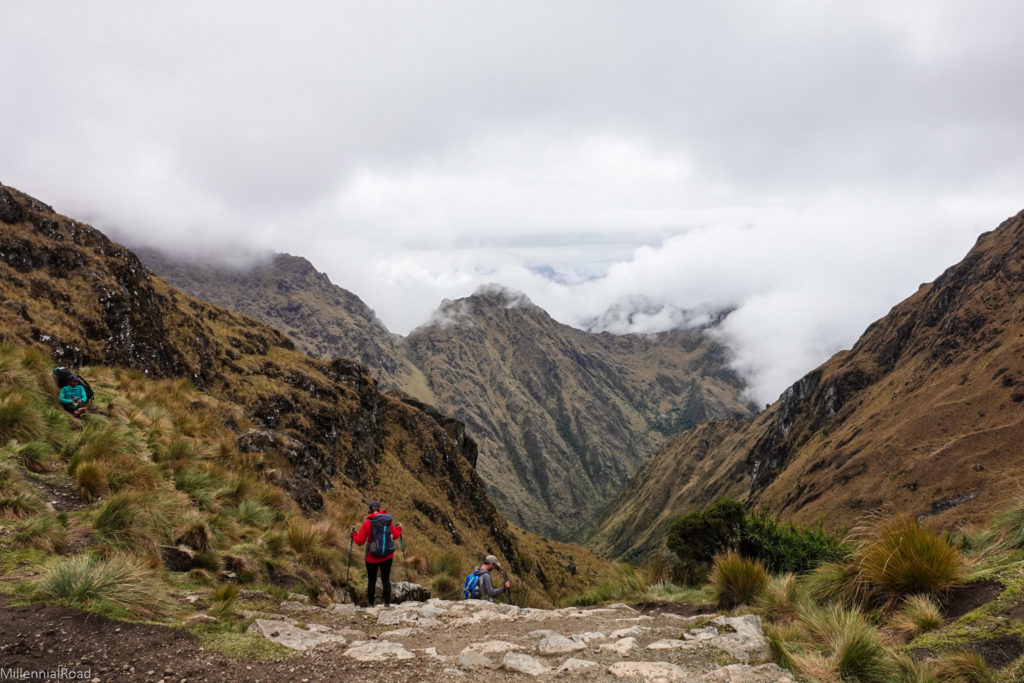
When we made it back to camp, our crew of porters was waiting for us with our tents and sleeping mats already set up. As was becoming the norm, we didn’t have to wait long before another delicious meal.
The food was not only delicious, but there was so much of it we couldn’t even finish it. I was glad to know none of the leftovers would go to waste.
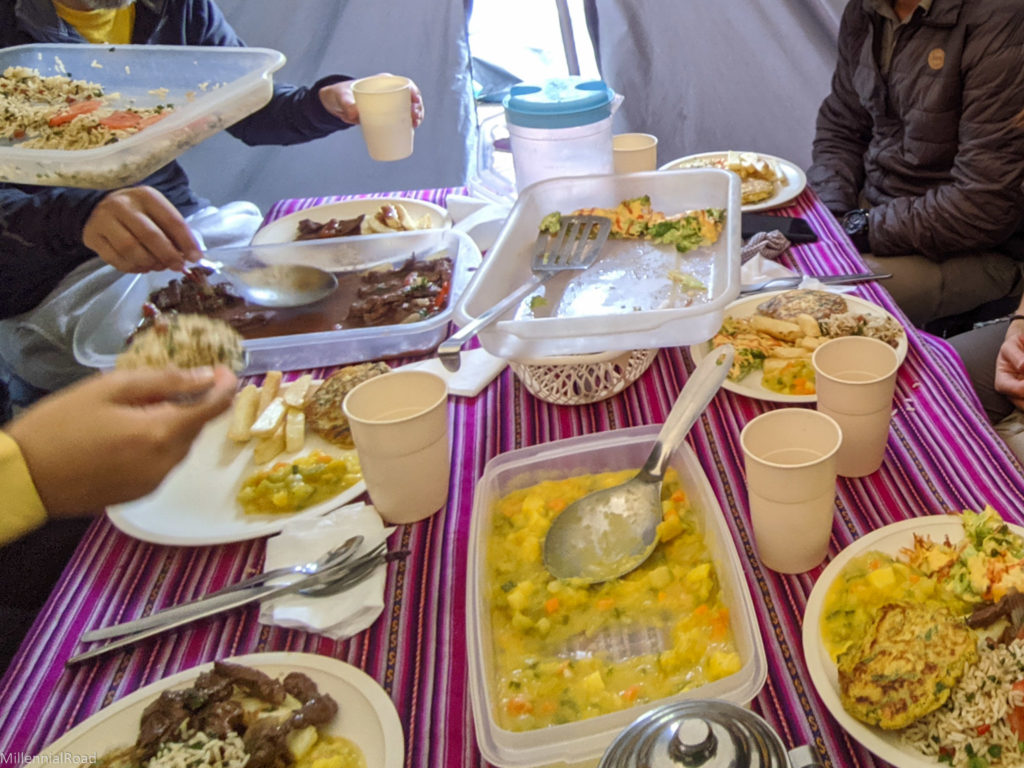
We were all so exhausted after lunch that we went back to our tents for a short nap before having the rest of the day and evening for relaxation.
My body was not complaining after the strenuous day we had, especially knowing we had the longest day of hiking ahead of us the next day.
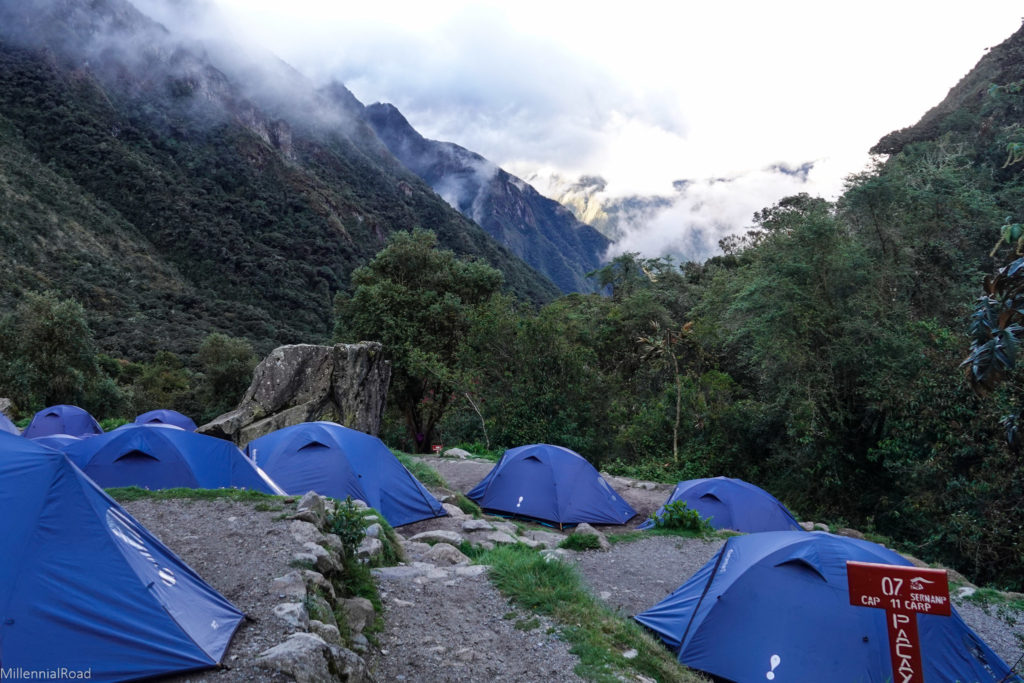
The third day of the trek
The third day of our trek was starkly different than the previous days. While the first two hours began similarly as we hiked uphill, we spent most of the remainder of the day trekking downhill. Most of the downhill was quite steep and required hiking poles.
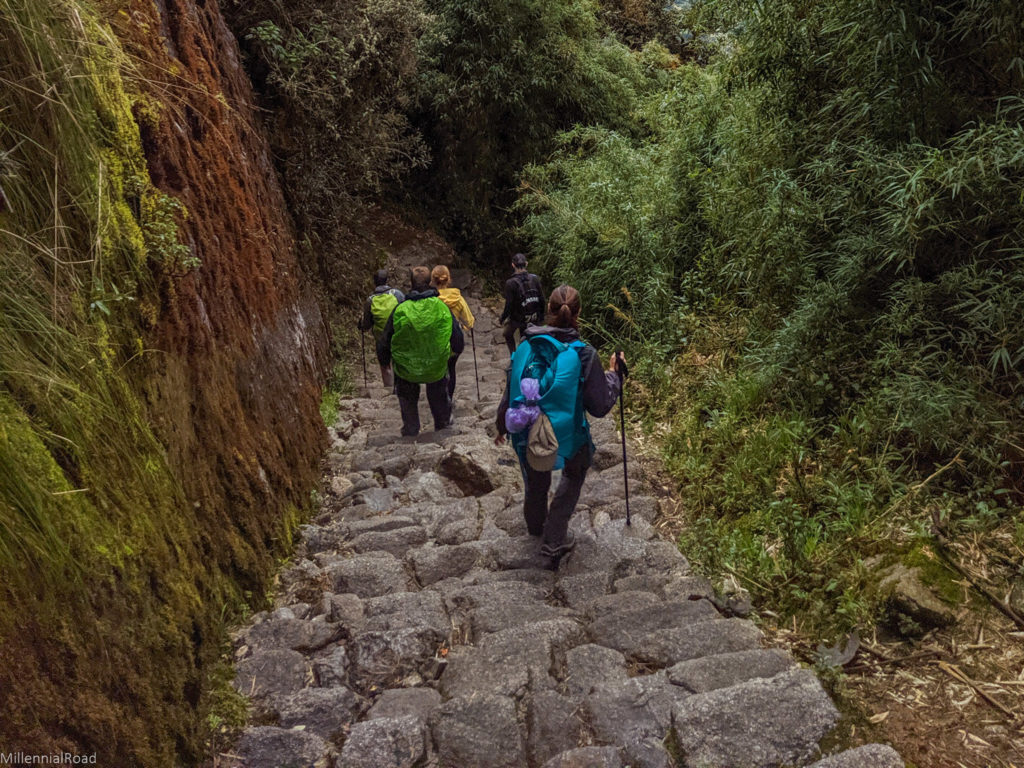
In total, we hiked for nearly 10 hours. It was rainy for much of the day. Some of the downhills were so incredibly steep that it could be a bit nerve-racking at times, especially given the slickness due to the rain. I found myself using my hands at times to balance my footing.
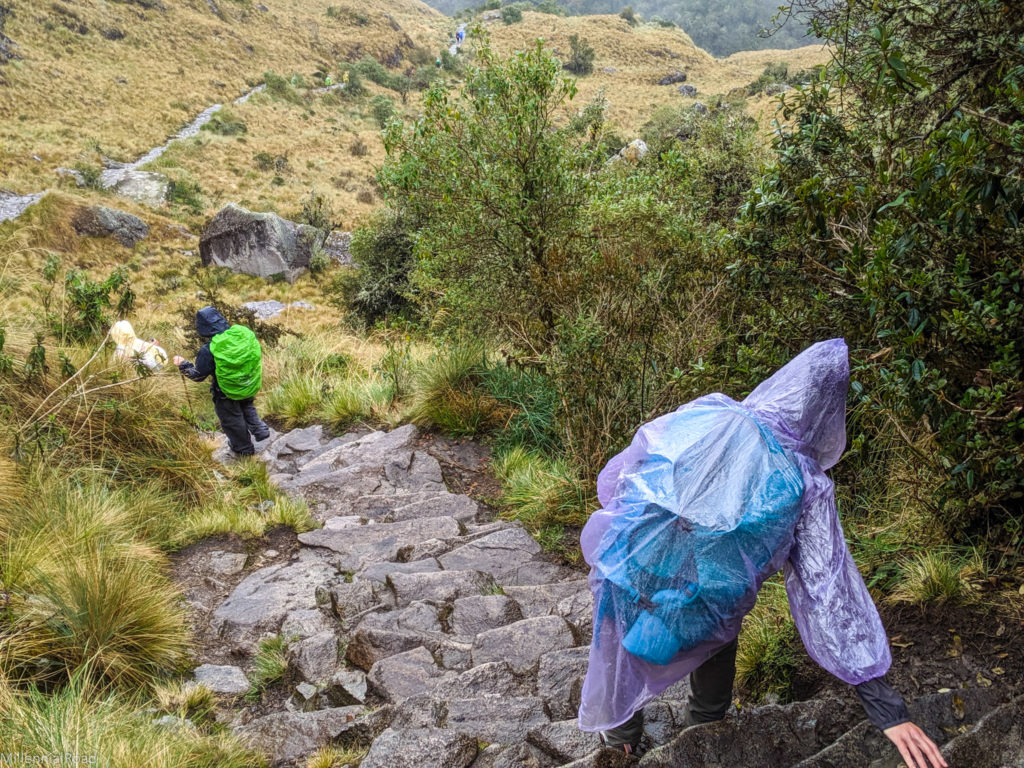
The day was filled with breathtaking views, as we passed by jaw-dropping mountainscapes and overlooked the winding river cutting through the lush, green valley.
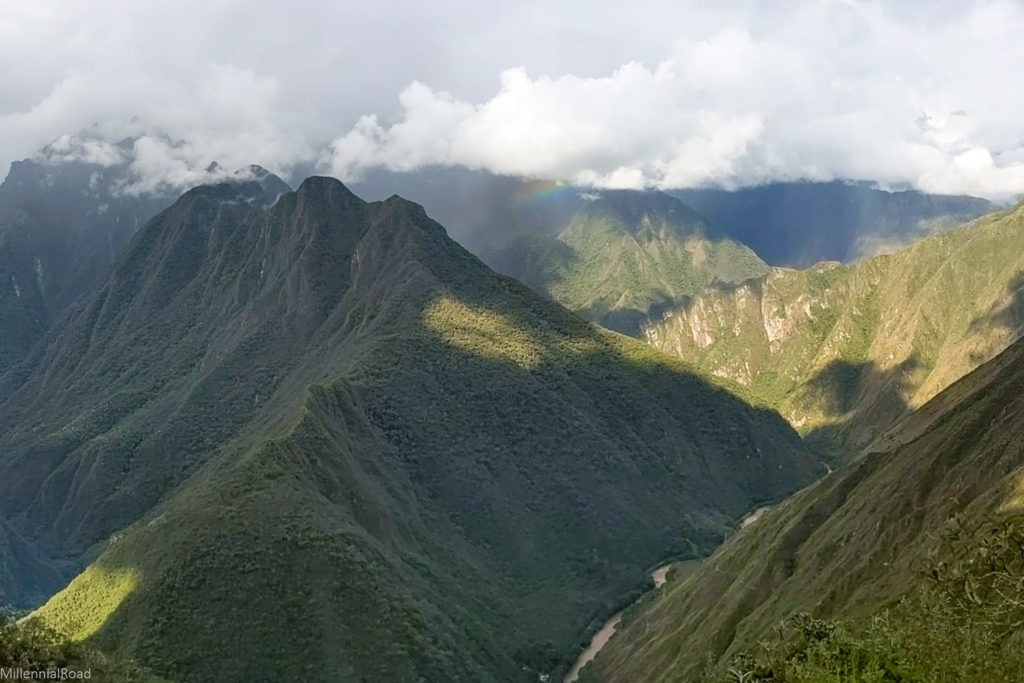
Waterfalls were abundant throughout the trek, leaving thick streams of white flowing down the rocky, green cliffsides.
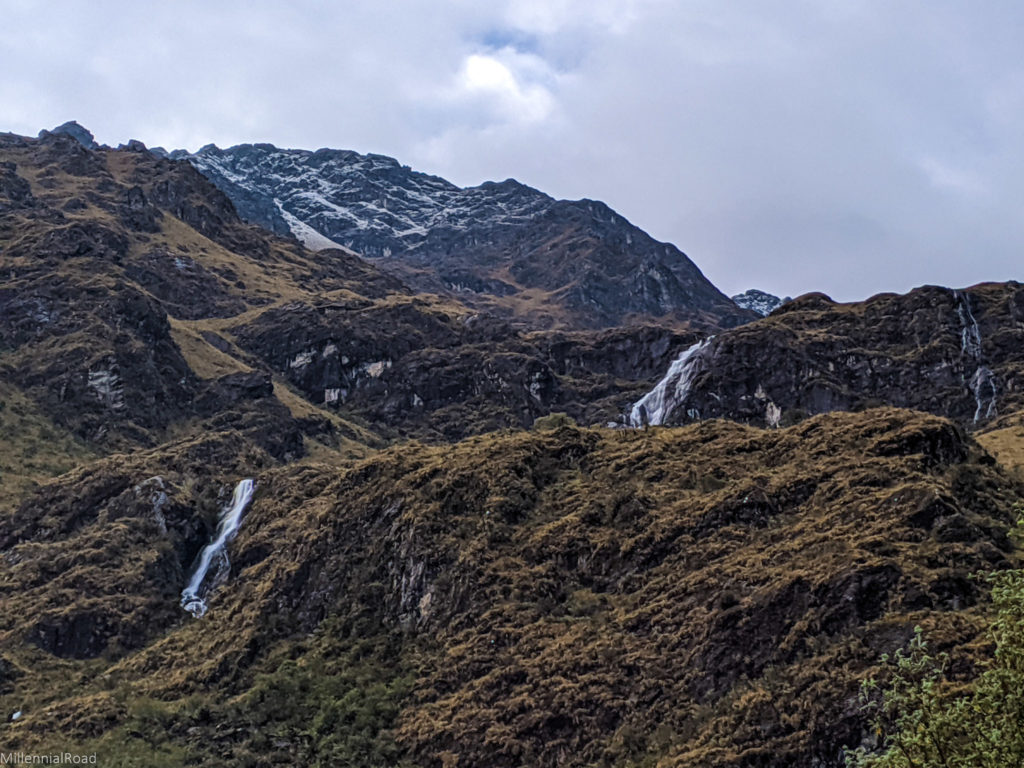
Yet, there was so much more to see than extraordinary scenery. We visited four different Inca sites during the third day of the hike, each of which was magnificent in its own way.
The ability of the Quechua people to create these incredible places so long ago is awe-inspiring. They were much larger and more intricate than I would have expected, and in such difficult areas to get to by foot.
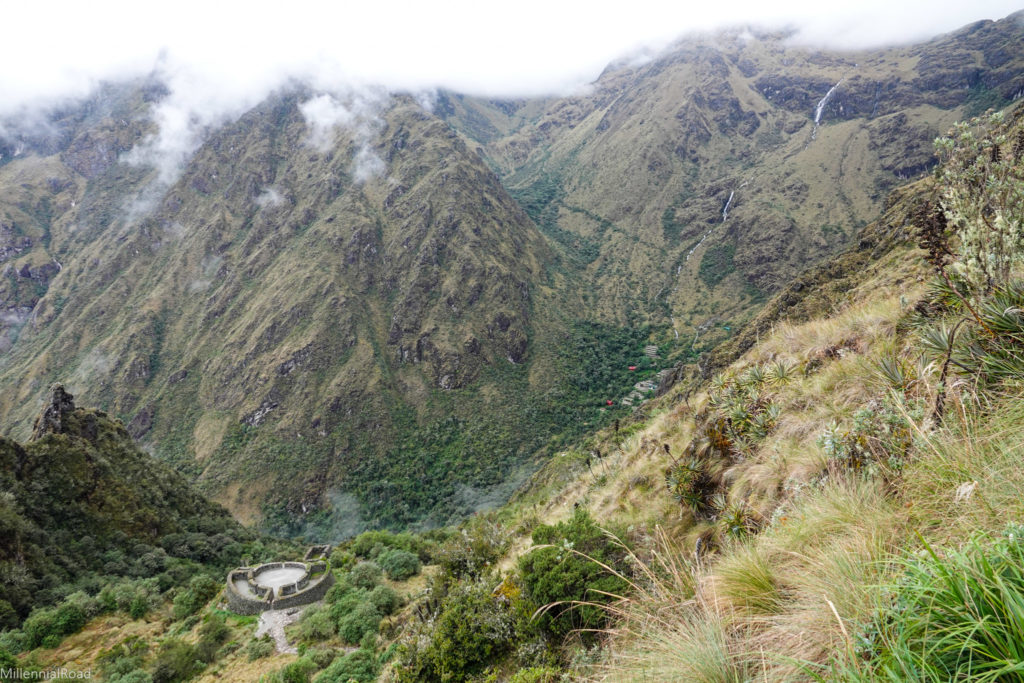
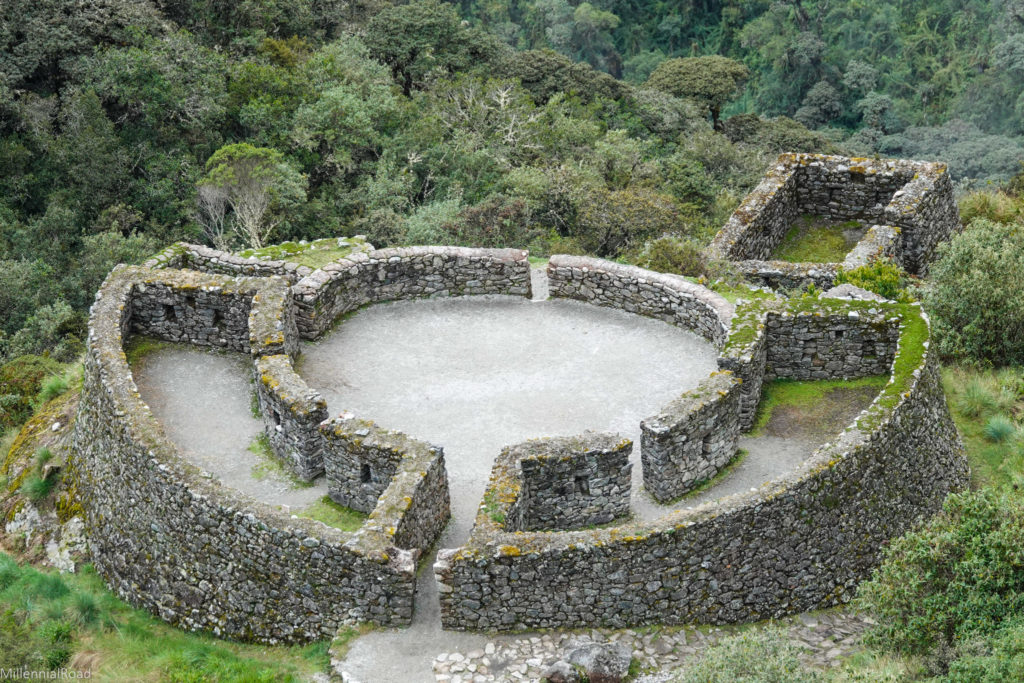
As we reached the second set of ruins, we had to climb steep, exposed rock stairs to get to it. The archaeological site expanded much further than the eye could see upon first sight. I was keenly aware of the fact that each structure we passed would have been that much more difficult to build.
Shortly before we arrived at the third Inca site, we stopped for a buffet lunch. Once again, the food was incredible. The most amazing part—they served us a freshly baked cake for dessert.
The fact that the porters and chef carry all of this and make such elaborate dishes in a tent in the middle of nowhere still blows my mind.
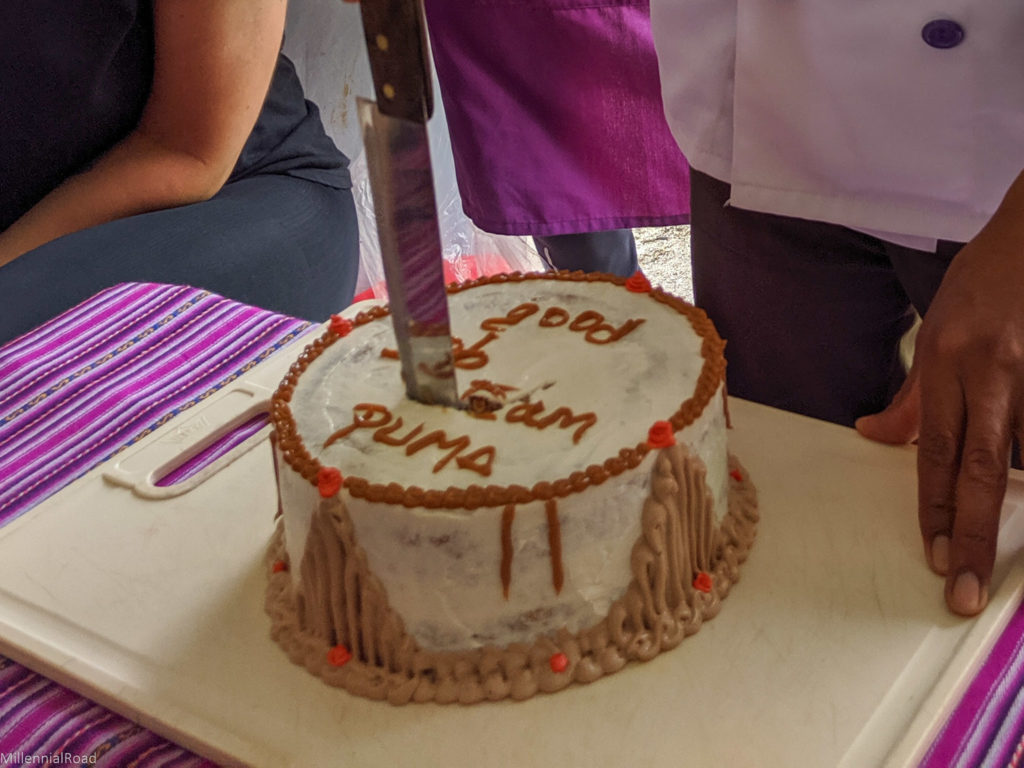
Continuing the trek after lunch, we still had much ground to cover and more sights to see. Each set of ruins seemed to be more impressive than the last.
Gazing out at the Andean mountain range behind the hazy cloud cover, I felt inspired as I took in the cascading structure of the ancient site in front of me.
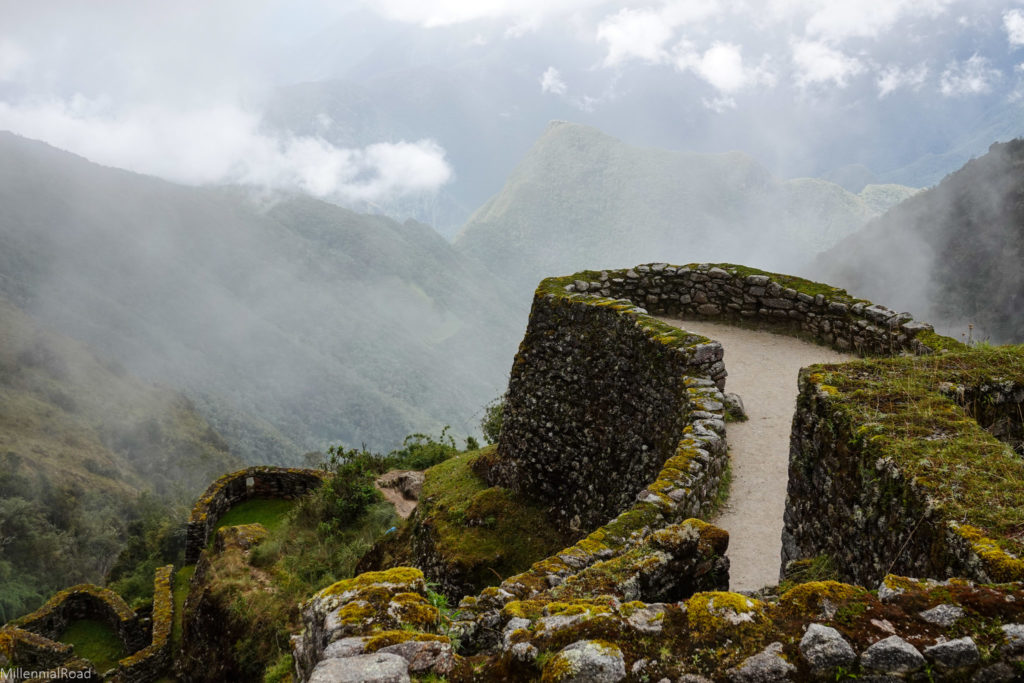
Stepping aside for a few llamas to pass by us on the narrow trail, we enjoyed the moment to appreciate these animals and catch our breath before continuing on to the last Inca site of the day.
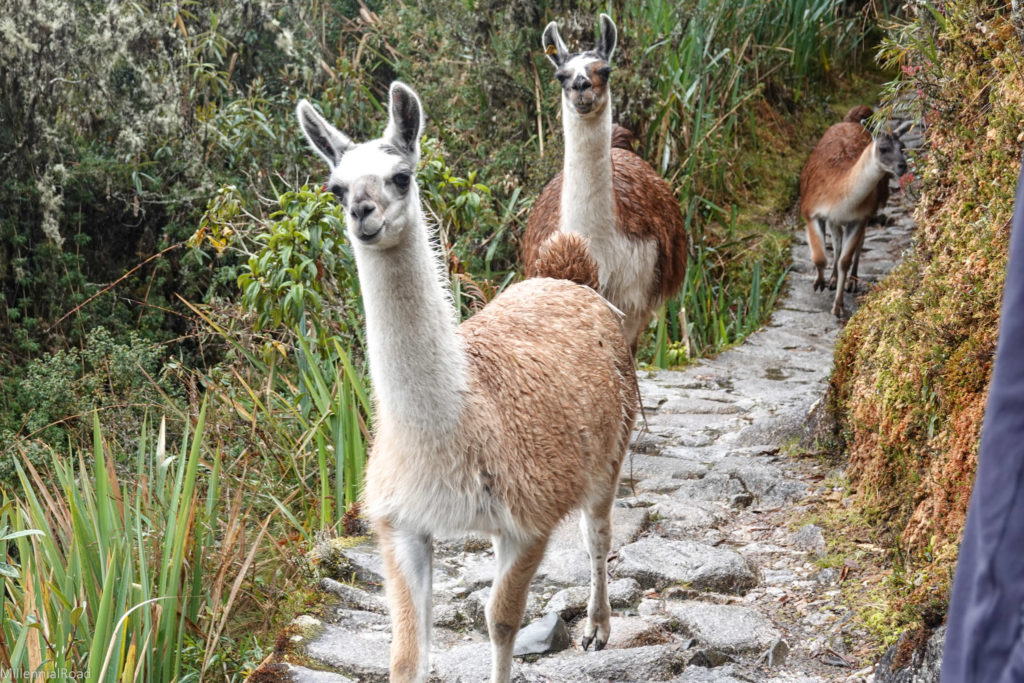
The final ruins that we encountered was the largest of the day, with so many levels of terraces it was hard to believe. Its magnificence was immediately apparent from the moment you laid eyes on it.
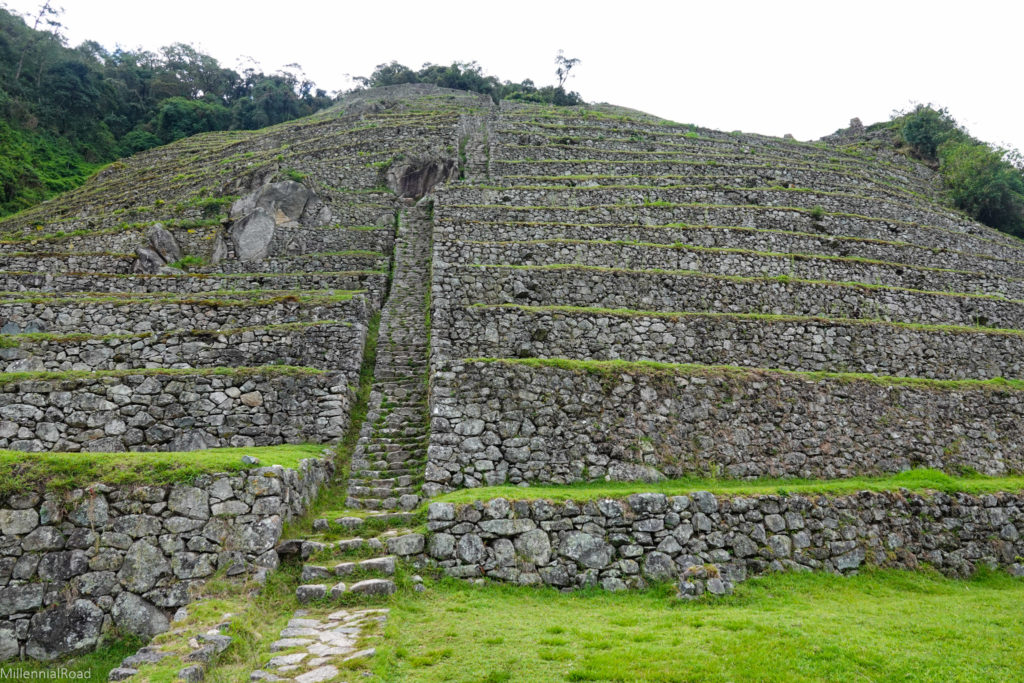
Exploring this ancient site requires going up and down quite a number of stairs, but the effort is well worth it.
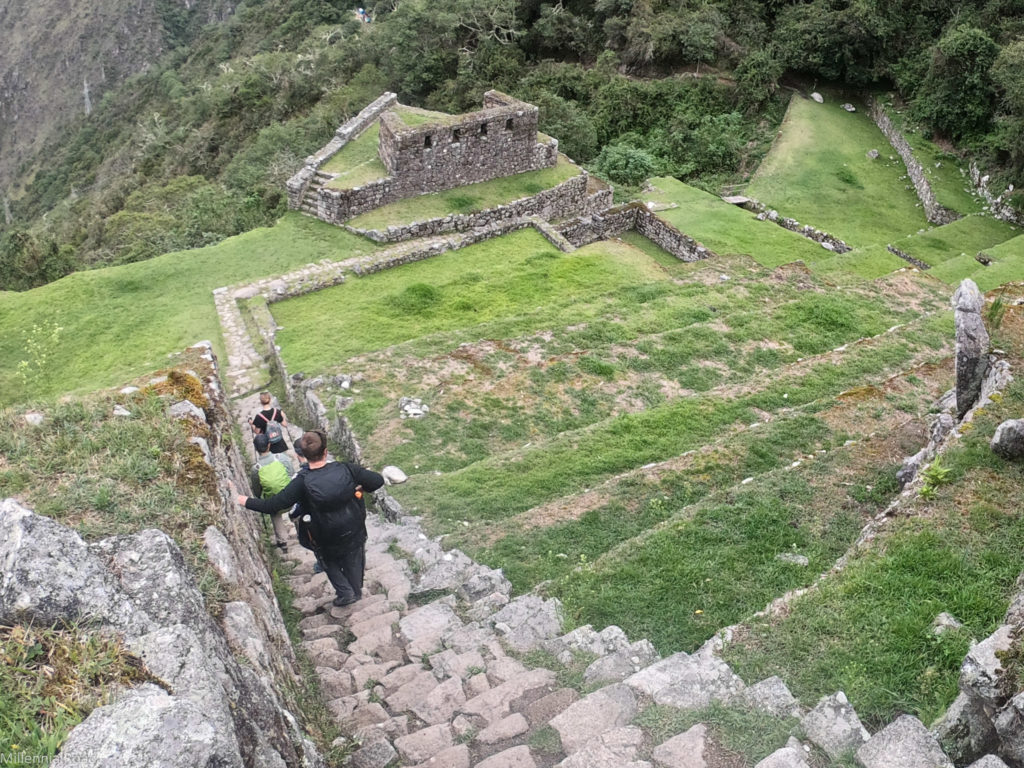
Our entire group was feeling invigorated as we gazed out onto the mesmerizing scenery in front of us, with these remnants of ancient civilization standing tall behind us.
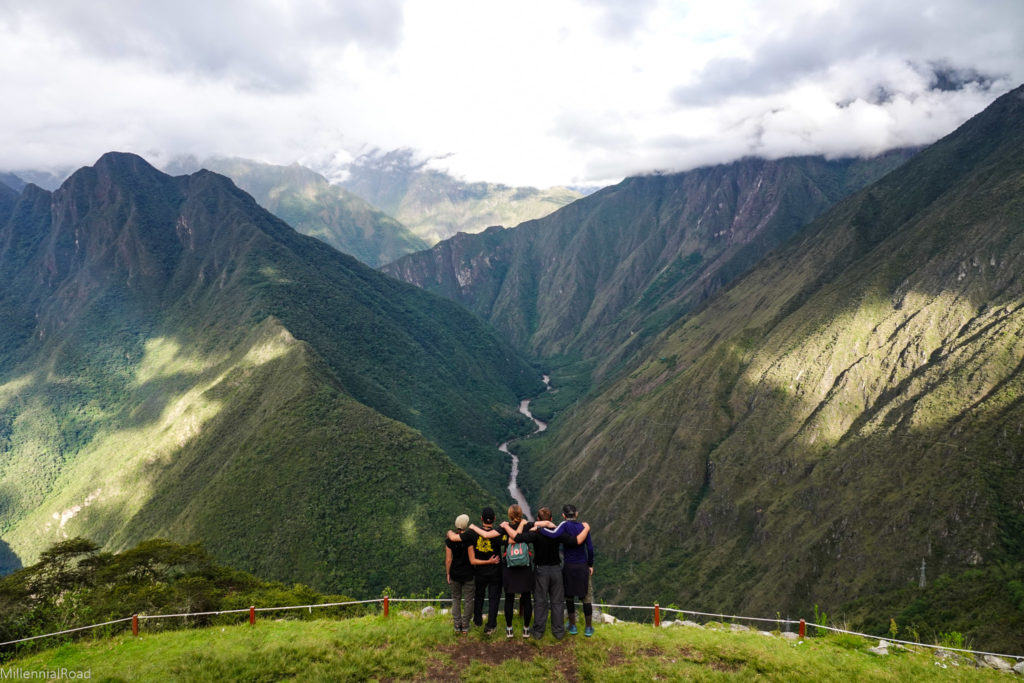
As we pushed through the final stretch of the hike for the day, we came across a group of alpacas, including the most adorable baby alpaca. Of course, we had to stop for photos.
We made it to our campsite after 5 pm since it was such a long day. The sun was setting, and it was beginning to get quite cold due to the elevation.

After dinner, we said thank you and goodbye to the porters and chef. We would go our separate ways in the morning as we ventured into Machu Picchu and they returned home to their families, making these our final moments together.
I attempted to express our gratitude on behalf of the group in my mediocre Spanish. I felt a little embarrassed as I stumbled over my words, but I think the porters appreciated the gesture of at least attempting to speak to them directly. It was the very least I could do to show appreciation for how much they had done for us.
We all went to bed pretty quickly after dinner, excited for what was to come next. Each day of our trek had been increasingly more amazing. I could hardly wait to find out what it would be like when we finally made it to Machu Picchu in the morning.
Taking the Sun Gate to Machu Picchu
On the fourth and final day of our trek, we woke up at 3:30 am to pack up, eat breakfast and get going. After waiting in line for about an hour before passing the first checkpoint, we trekked a couple of hours further to get to the Sun Gate, which is well known as the entryway to, and first viewpoint of, Machu Picchu for those hiking the Inca Trail.
With adrenaline running through our veins due to the excitement of finally arriving at this ancient citadel, the early morning wake-up call was becoming a distant memory.
Thick clouds filled the sky when we first arrived at the Sun Gate. As the clouds eventually began to clear, we got our first glimpse of Machu Picchu.
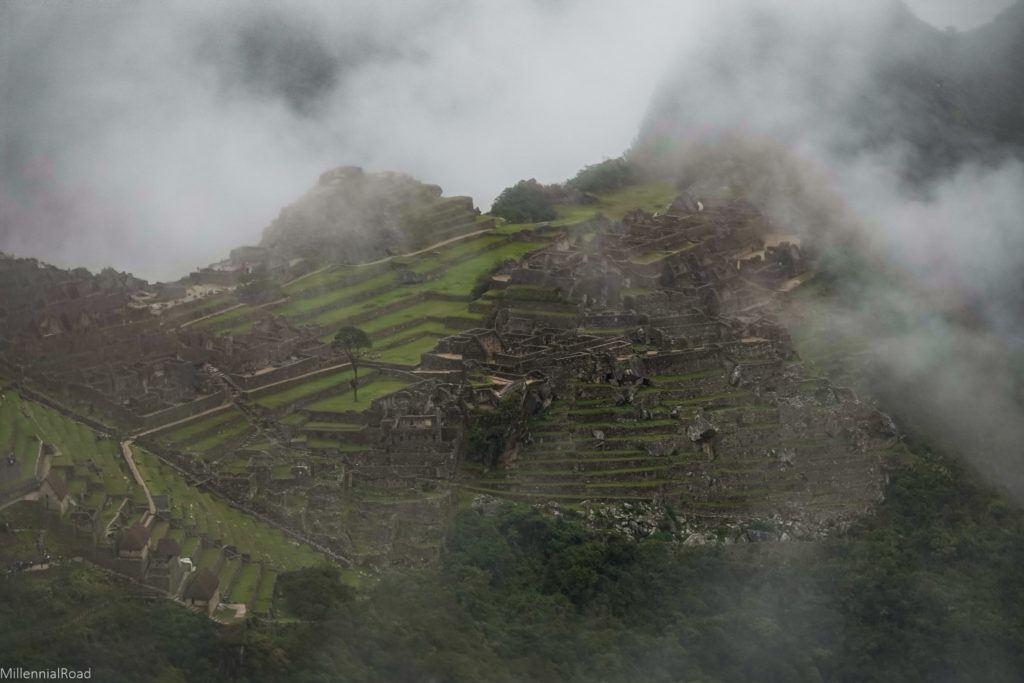
We could only make out parts of the citadel due to the clouds, but its splendor and grandeur was clearly undeniable. After 45 minutes of hiking downhill towards the city, we arrived at the spot where you see the typical postcard view of Machu Picchu.
I had, of course, seen many pictures of the citadel and knew that it was something to marvel over, but it was not until I saw it with my own eyes that I could truly appreciate the grandiose scale of it.
Although it was still overcast and we did not have the idyllic view, it actually made for a pretty cool sight with the clouds looming over this majestic, ancient city.
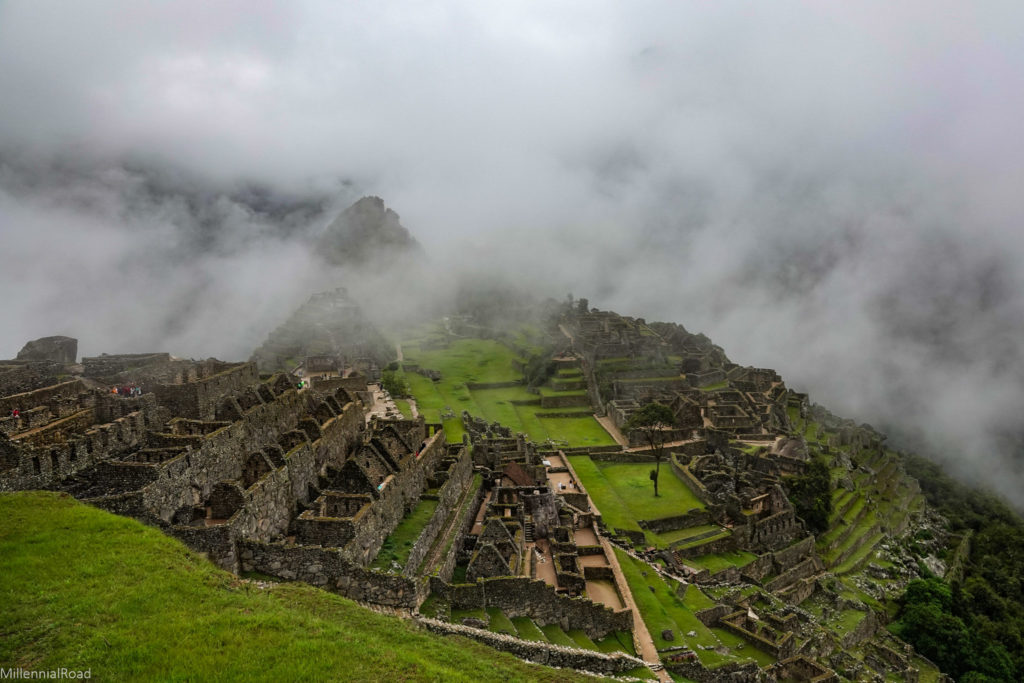
Giving up on waiting for the clouds to clear, we made our final descent down into Machu Picchu to begin our tour of the citadel with our guide Alex.
After exiting to drop off our bags and grabbing a few quick refreshments, we headed back in, excited to explore this spectacular place up close.
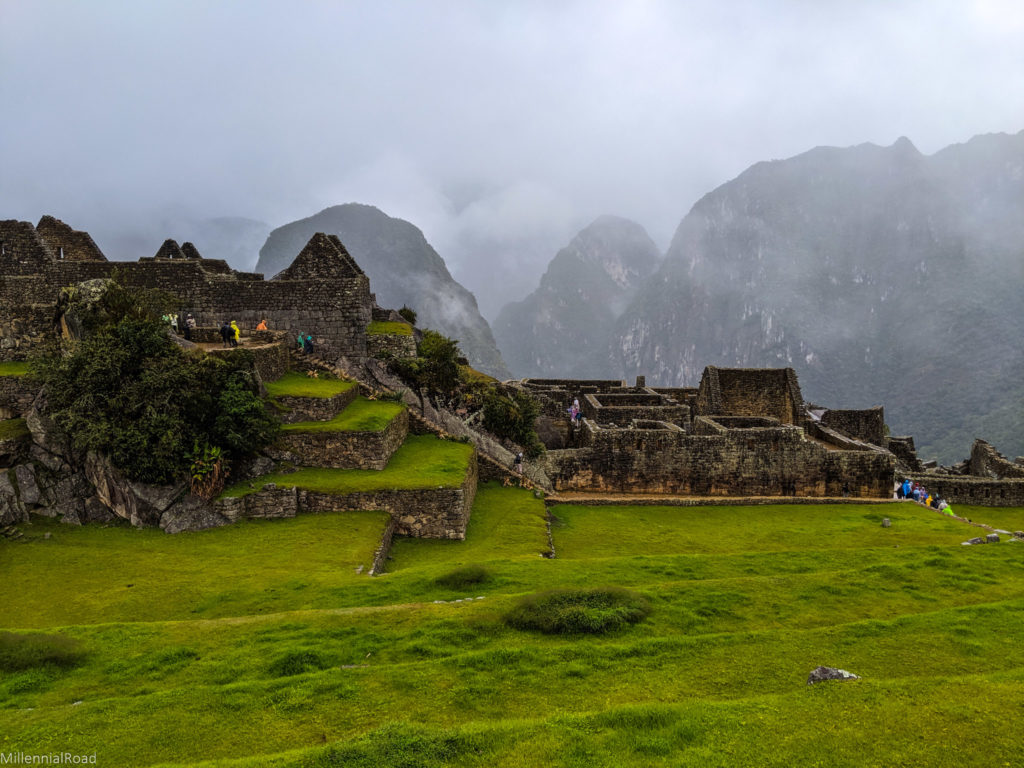
Almost immediately upon us reentering the citadel, it began to rain. And by rain, I mean pour. And it never stopped raining for the three hours that we were there exploring the city.
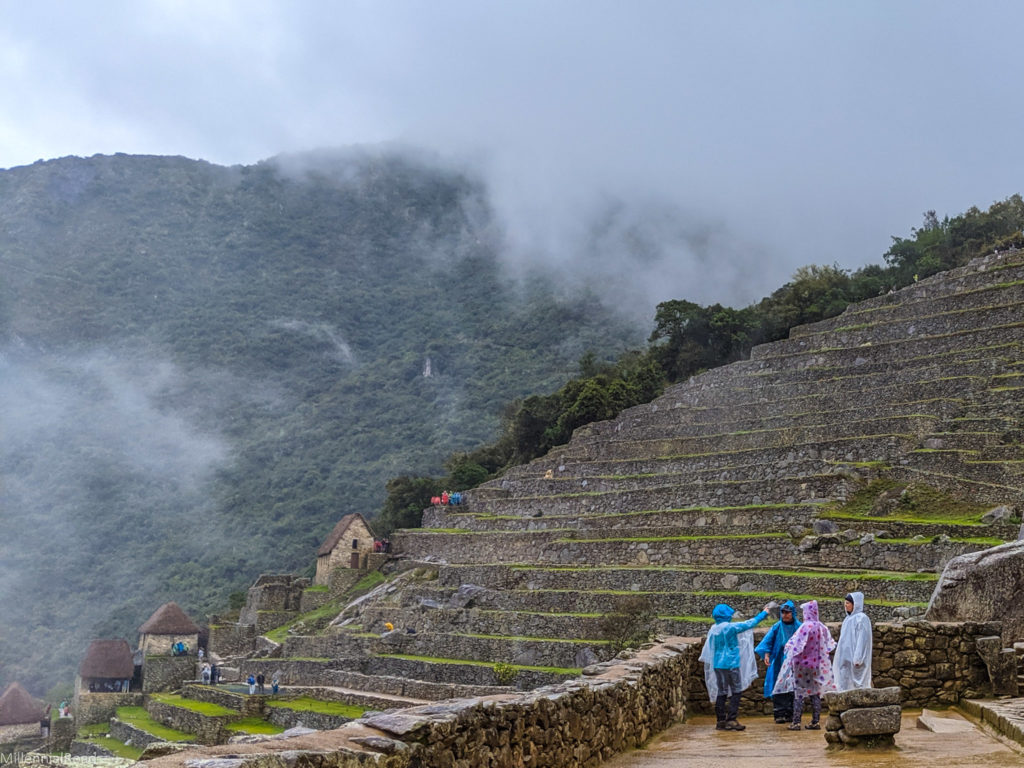
We were soaking wet and cold, but that did not stop us from spending the entire tour in amazement. It is no wonder that this is one of the new wonders of the world.
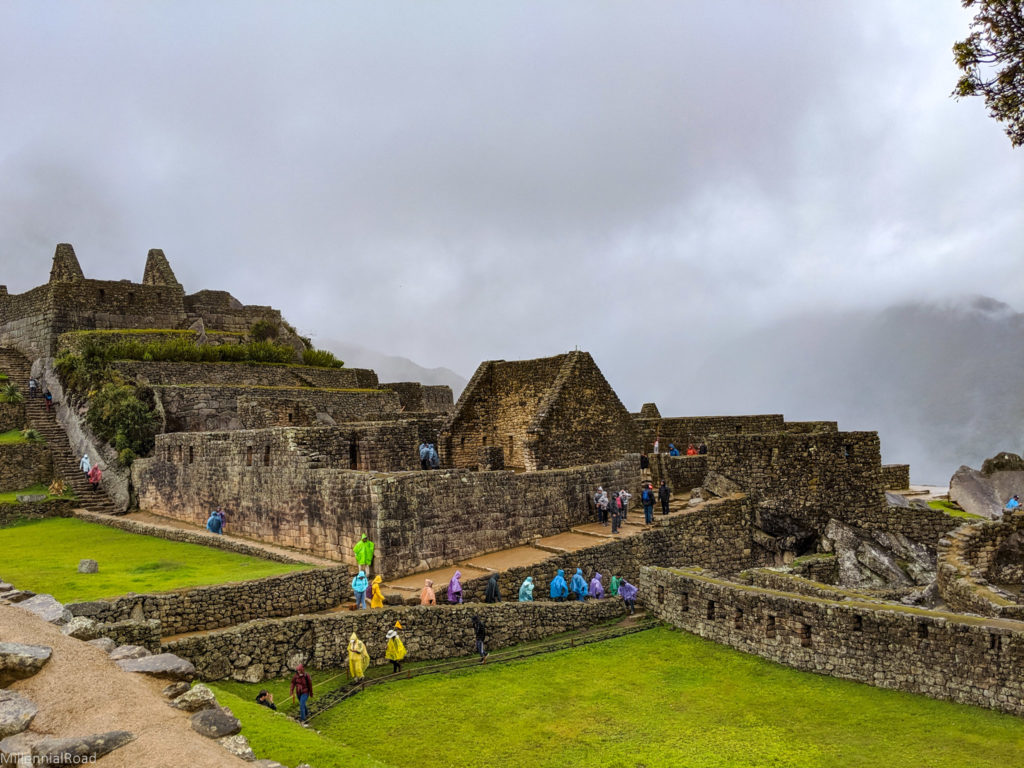
It is fascinating how the Quechua people built such an intricate treasure in such a difficult location so long ago. And I think we can all agree that the fact that these structures are still standing is beyond impressive.
The capacity to transport the materials necessary across such difficult terrain, the expert level of craftsmanship seen throughout the ruins, and the ability to not only survive but to thrive at such a high altitude, and all dating back to the 1500s and earlier, is truly astounding.
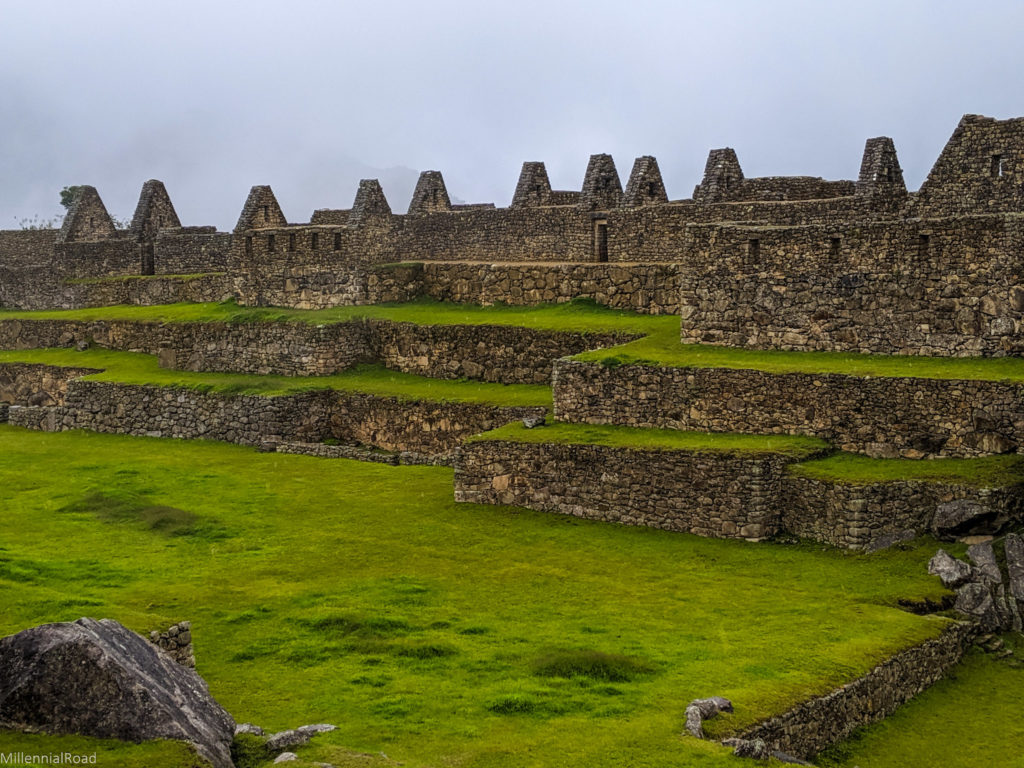
Hiking the Inca Trail to arrive here and then having a local guide explain the rich history to us made the experience so much more rewarding.
The fact that it was so amazing to visit Machu Picchu while freezing and soaking wet speaks volumes about the magnificence of this place. And we weren’t even close to the only ones touring this archaeological complex in the pouring rain. In fact, I was stunned by how crowded it was on a rainy day during the off season.
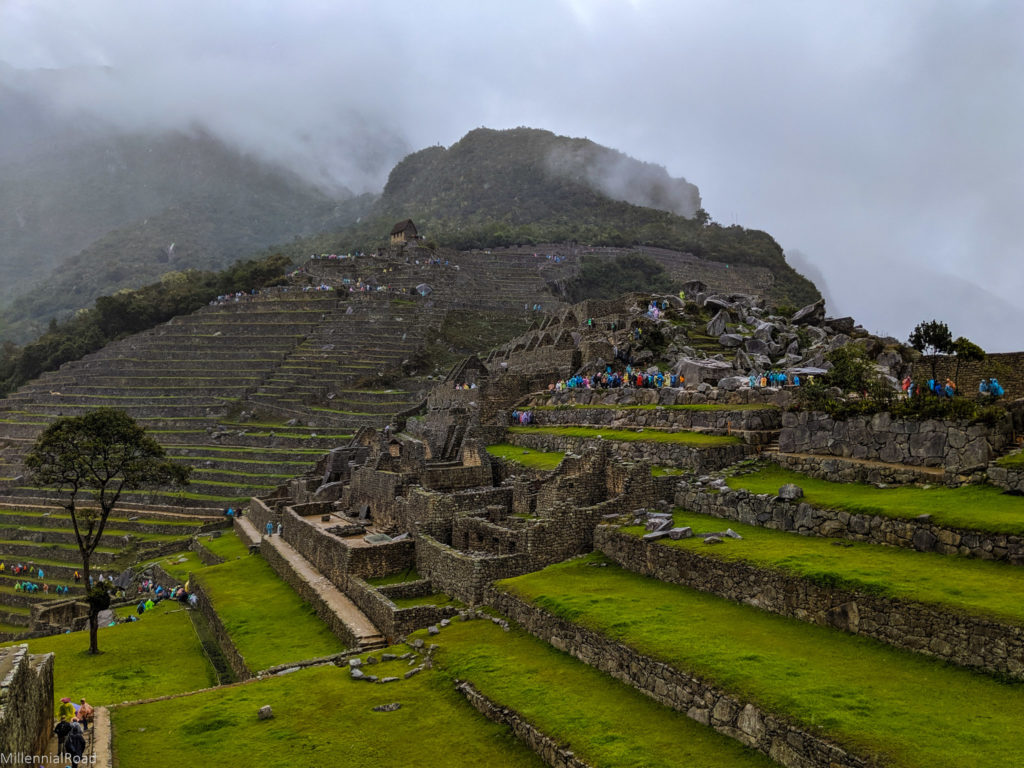
After spending about three hours exploring the citadel, we caught a bus to Aguas Calientes, the nearest town, and met up with the rest of the group for lunch. Aguas Calientes is an adorable town that warrants spending more time there if possible.
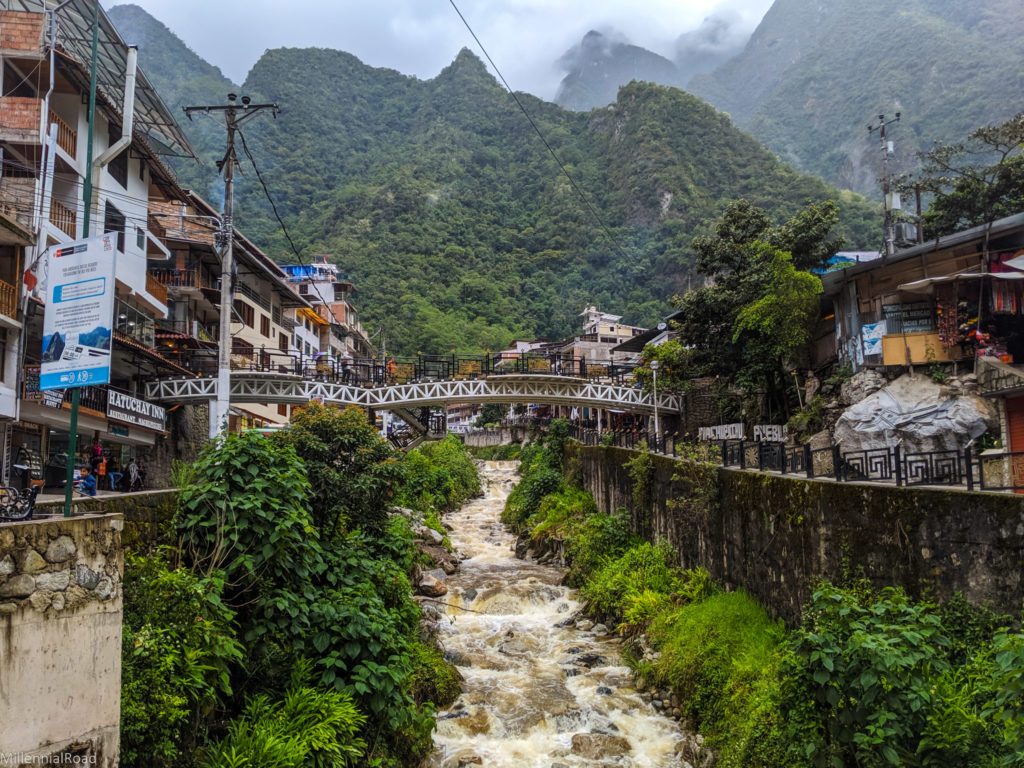
One delicious lunch and well-deserved beer later, we were on the train from Aguas Calientes to Ollantaytambo. We immediately transferred to a second bus to transport from Ollantaytambo to Cusco, our final stop of the night.
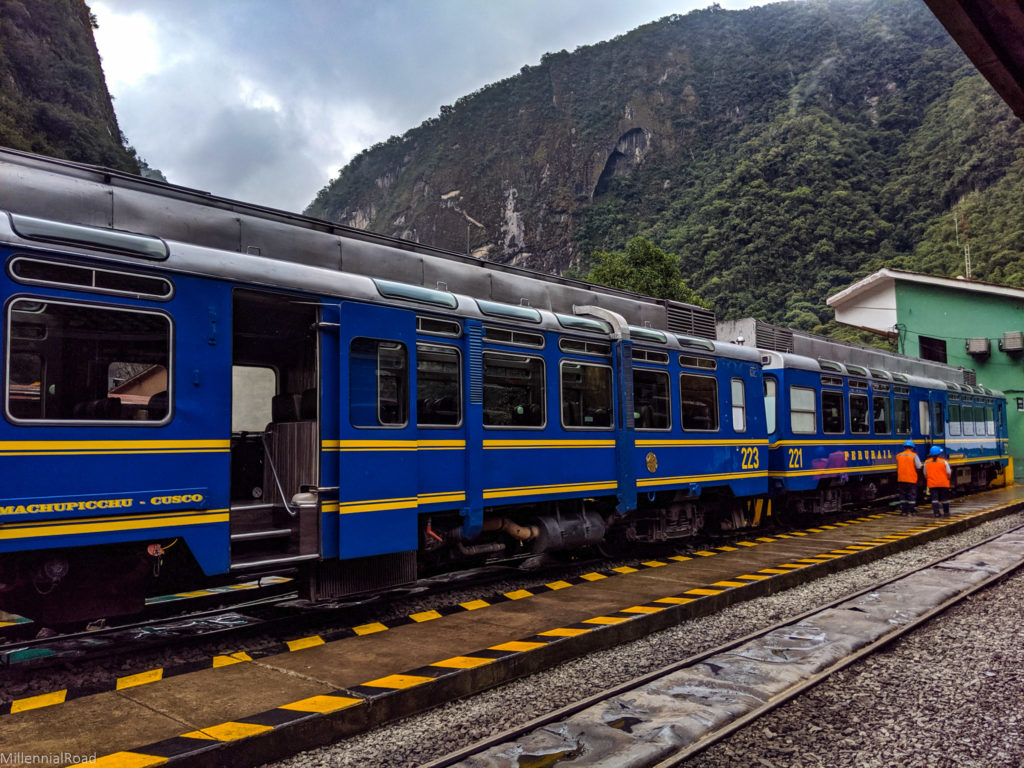
That’s right—after three full days of hiking and camping, we woke up at 3:30 am, hiked several hours, explored Machu Picchu, then took a bus, a train and another bus before finishing our day.
And I would do it all again in a heartbeat to have even a taste of the unparalleled experience of hiking the Inca Trail to Machu Picchu. After a long-awaited hot shower, we slept like babies after such a momentous adventure, and welcomed the ability to sleep in until 9 am the next morning!
Understanding the trek & choosing the right tour operator
If you read everything up to this point, I think you can appreciate just how phenomenal our trip was from start to finish. We spent quite a bit of time researching and carefully considering which tour operator we should book, and we could not have been more pleased that we chose G Adventures.
While there are numerous good tour operators to choose from, I suggest that you book your tour at least six months in advance. Otherwise, you may completely miss out on the opportunity to do this particular hike due to the limited number of permits issued each day and its popularity.
One benefit of G Adventures is that they focus on small group tours, so it is much more personalized. Another thing I love about the company is that they combine adventure with cultural experiences, exposing tourists to authentic customs and benefiting local communities.
Most importantly, G Adventures prioritizes hiring locally and fair treatment of workers, employing over 560 local guides, porters, cooks, drivers, and office staff. In recognition of this, G Adventures has been named as Best Inca Trail Tour Operator by the Regional Direction of Foreign Trade and Tourism of Cusco (RDFTTC) in Peru.
It never ceased to amaze me how luxurious the tour group was able to make our camping experience. It was by no means “glamping” as we used pit holes in the ground as toilets and slept on thin mats in small tents, but the service was unlike anything I could have imagined.
There were only five people in our tour group plus one tour guide, Alex. In addition to our guide, our small group was accompanied by 12 porters and one chef. Let me say that another way. Five visitors are part of a group making the trek, and 14 others are joining the trek as workers to make it possible.
The porters carried all of the food, tents, camping gear, and more. It is remarkable what these men are capable of. These were not large, muscular men who spent their lives training to hike. They were ordinary locals in pursuit of a better life for their families.
Many of the porters were relatively small in stature, in fact. Many were aging to the point that the job must have been wearing significantly on their bodies. This job gives them an opportunity for higher pay and more prosperity for their family, but it is at a price. It is incredibly strenuous work for them.
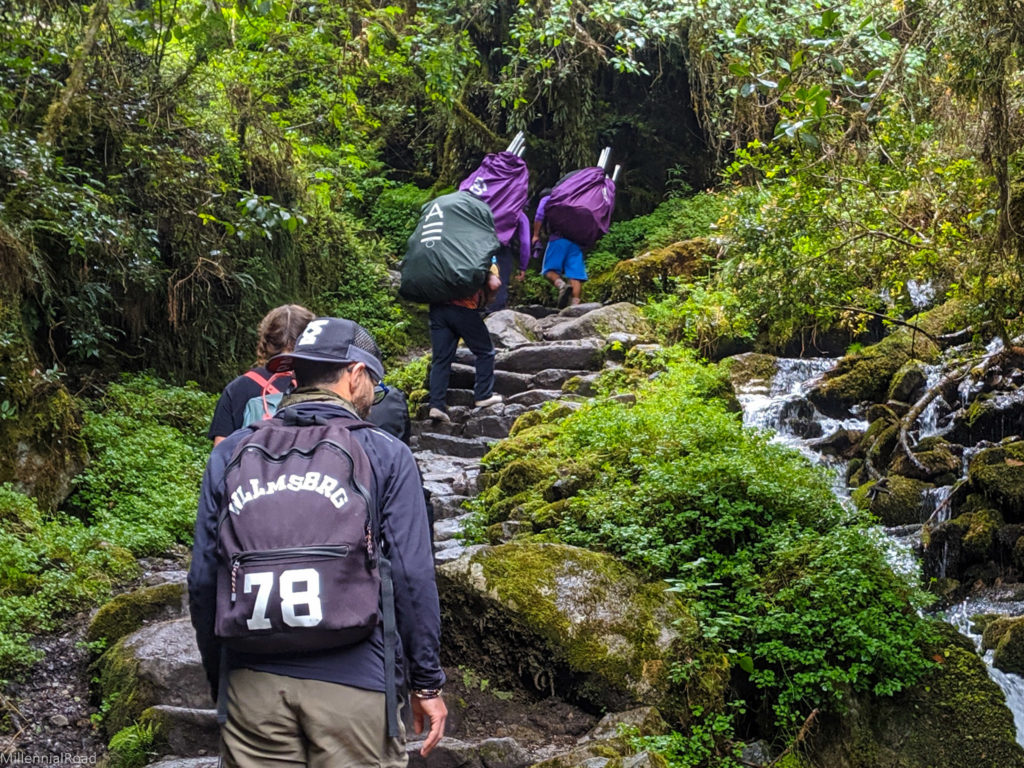
The Porter Protection Law enacted in 2001 guarantees the porters fundamental basic rights relating to their work conditions, including a limit on the amount they can carry of up to 44 pounds.
Let me continue to put that in perspective for you. Each morning, we would wake up, eat breakfast, gather our small backpack of belongings and begin our trek for the day. The porters would wait for us to leave before picking up all of our tents and packing up the campsite. Then they would hike so fast with 44 pounds on each of their backs that they would pass us up to arrive at our lunch spot.
They would set up a large tent and assist the chef in making our lunch. After we left the lunch spot to continue our trek, they would pack up all of that gear, and then once again run past us on the trail so that they could beat us to the campsite and have everything set up for us upon arrival.
When we arrived at our campsite after the hike, our tents were already assembled. The porters even blew up our air mats and provided us with hot water to rinse off. They did all of this while carrying 44 pounds on each of their backs, including items like tables and chairs.
And we thought we were exhausted from doing the same hike with just a small backpack.
So make sure to choose the tour operator wisely for your Inca Trail hike. And don’t forget to appreciate and thank the porters and other staff helping to make this unforgettable journey possible for you!
Continue following our trip around the world and read about our Skylodge adventure climbing a 400-meter cliff face to sleep in a suspended transparent capsule attached to the side of the mountain!
If you missed it, go back and read about our most recent adventures during our 15-day cruise of the Galápagos Islands.

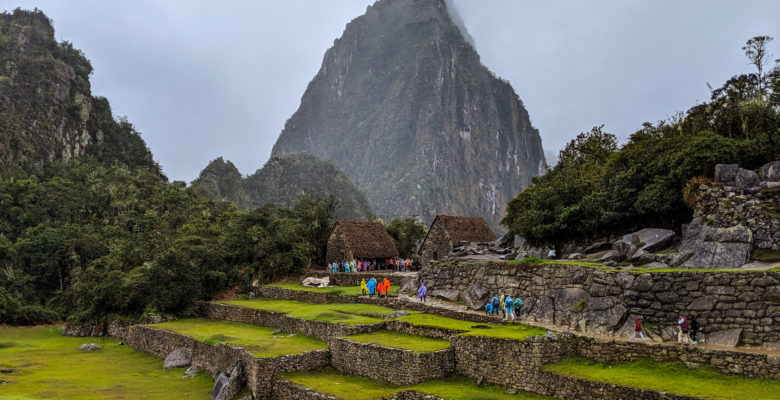
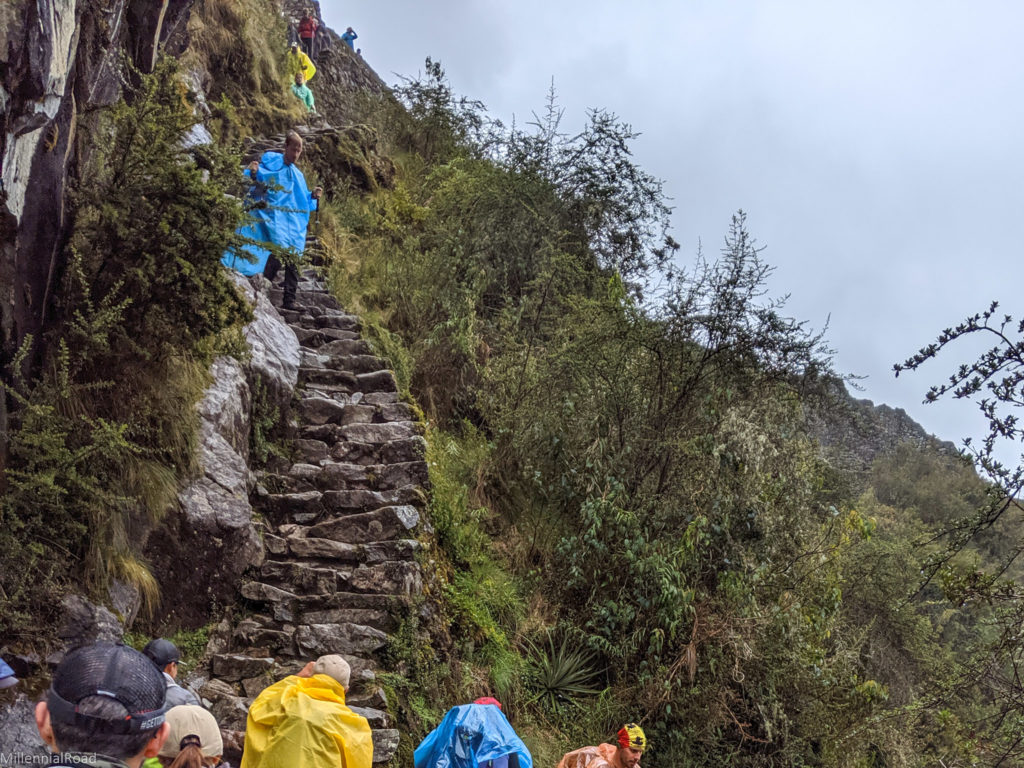
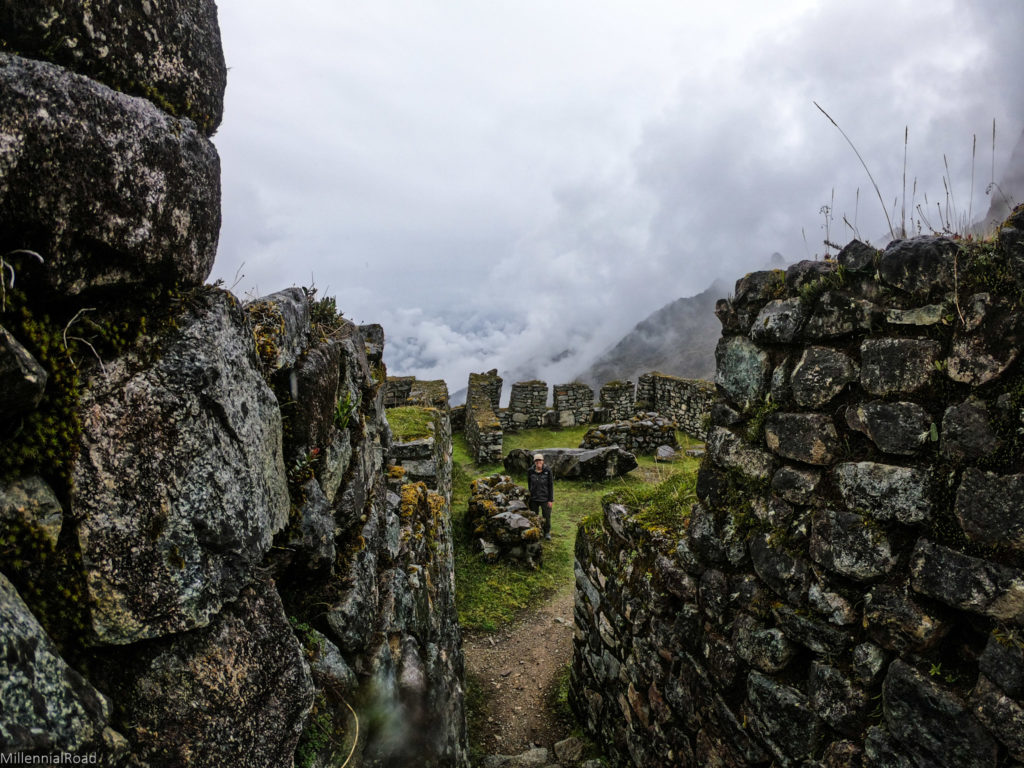
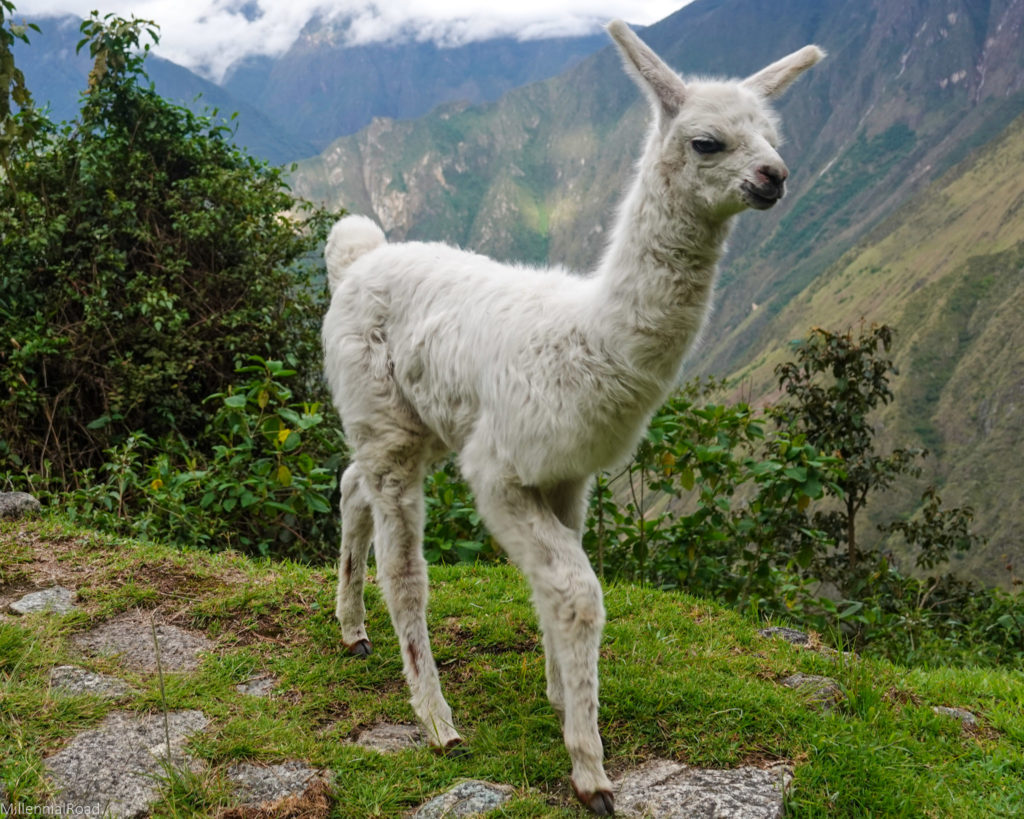
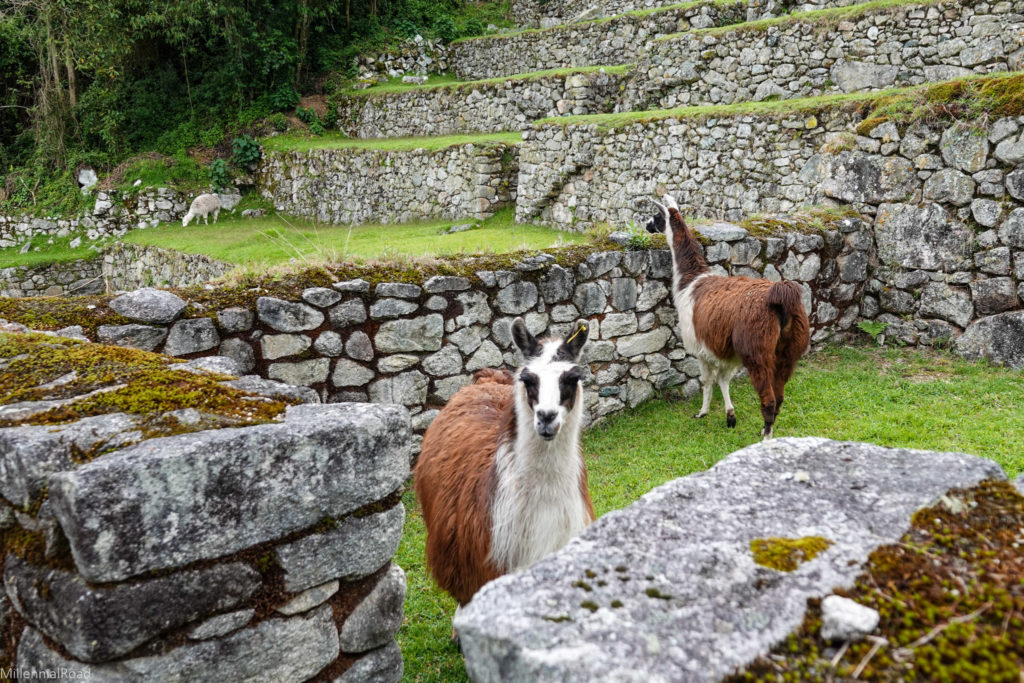
Leave a Reply